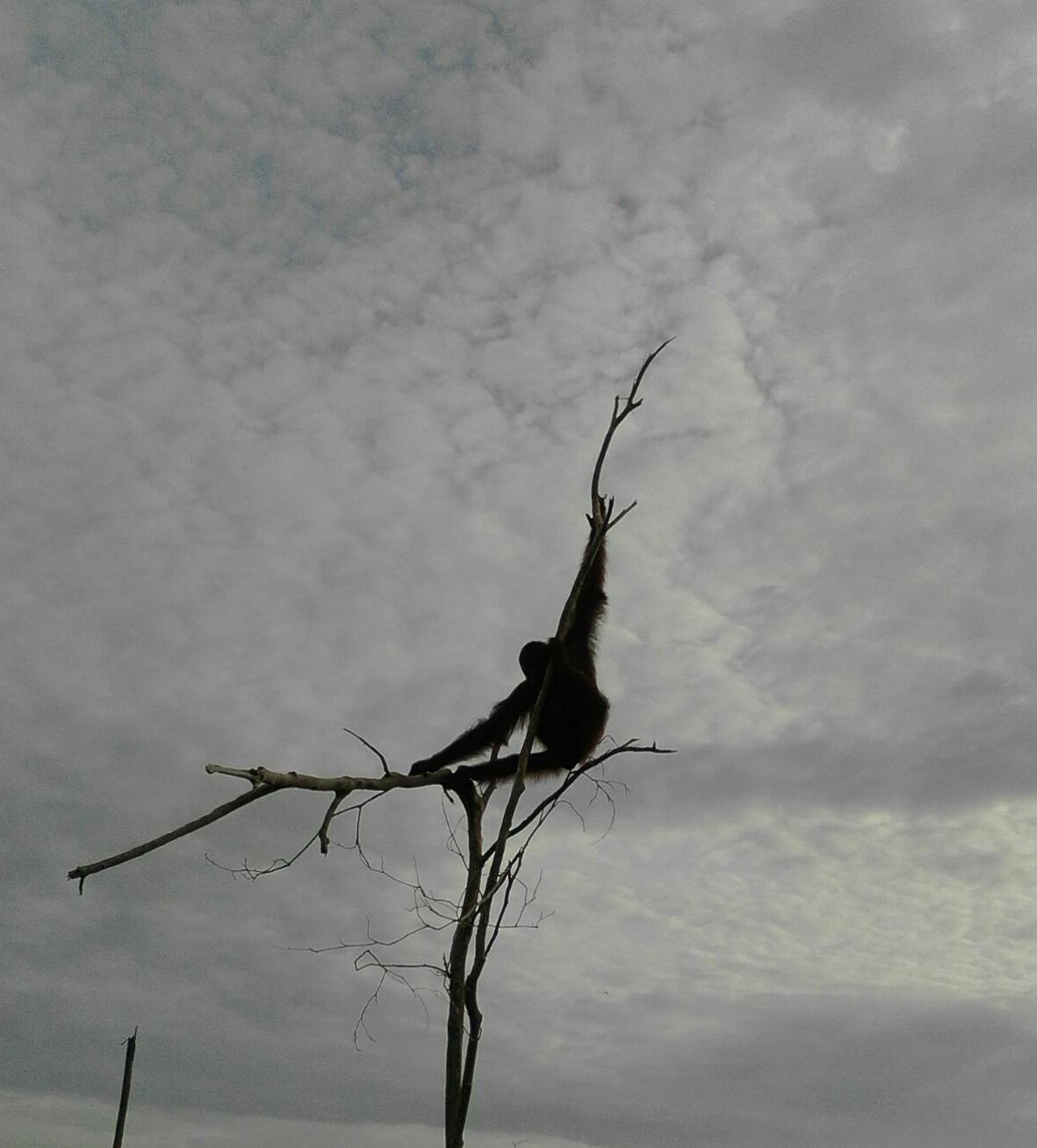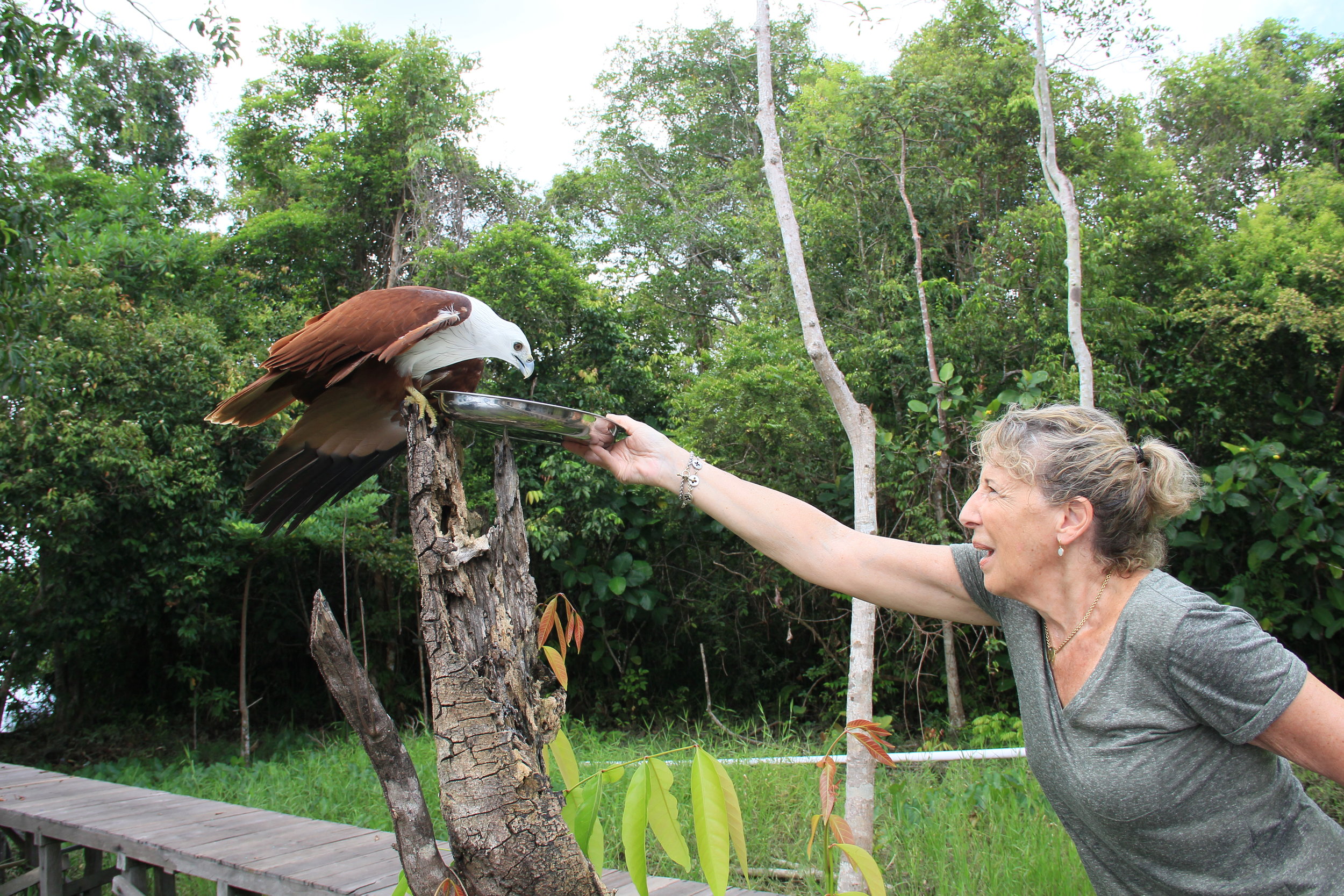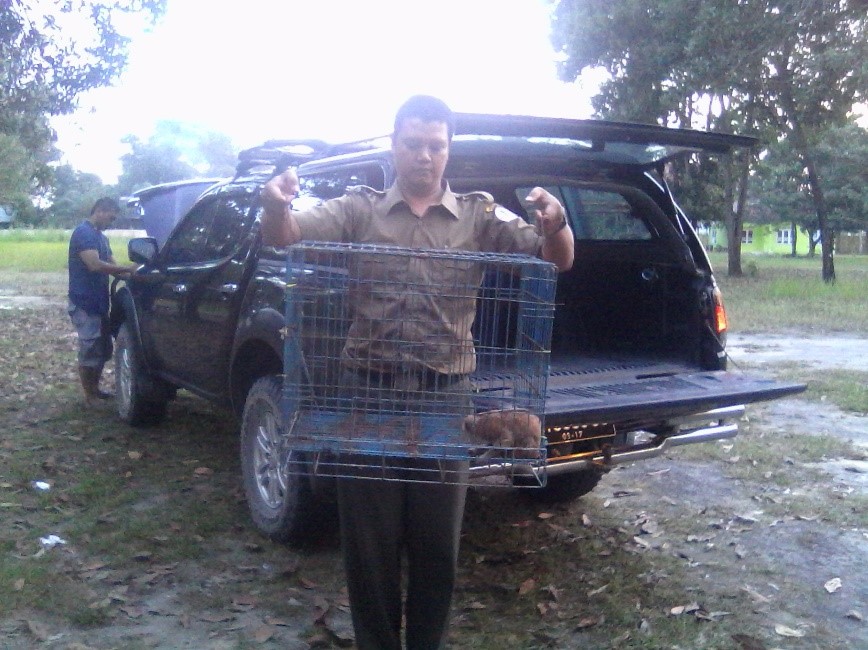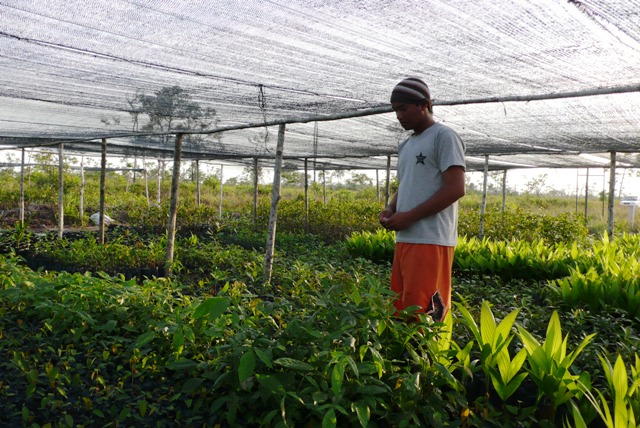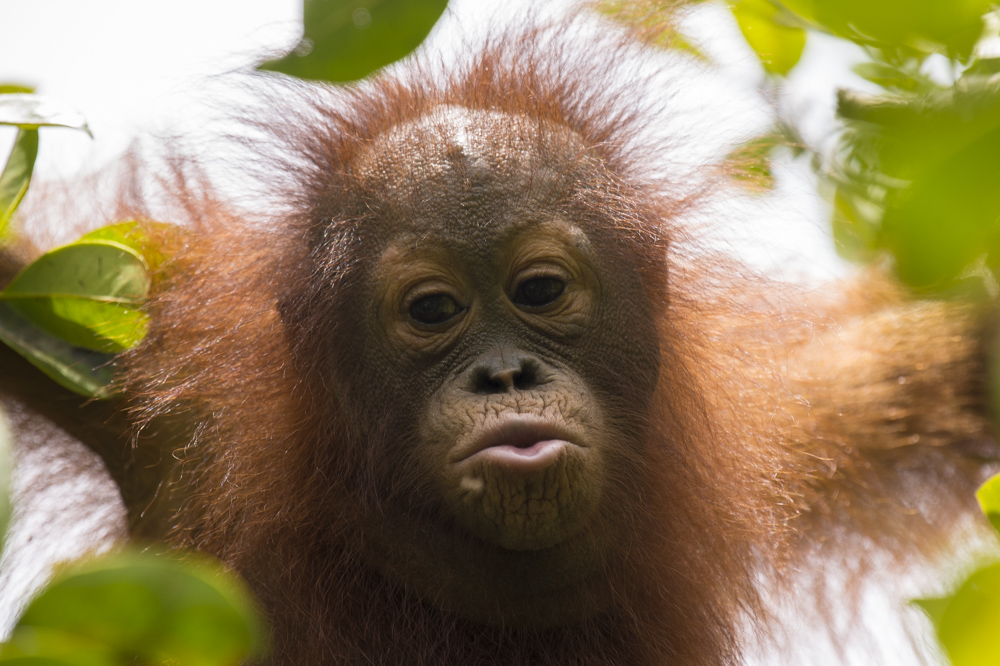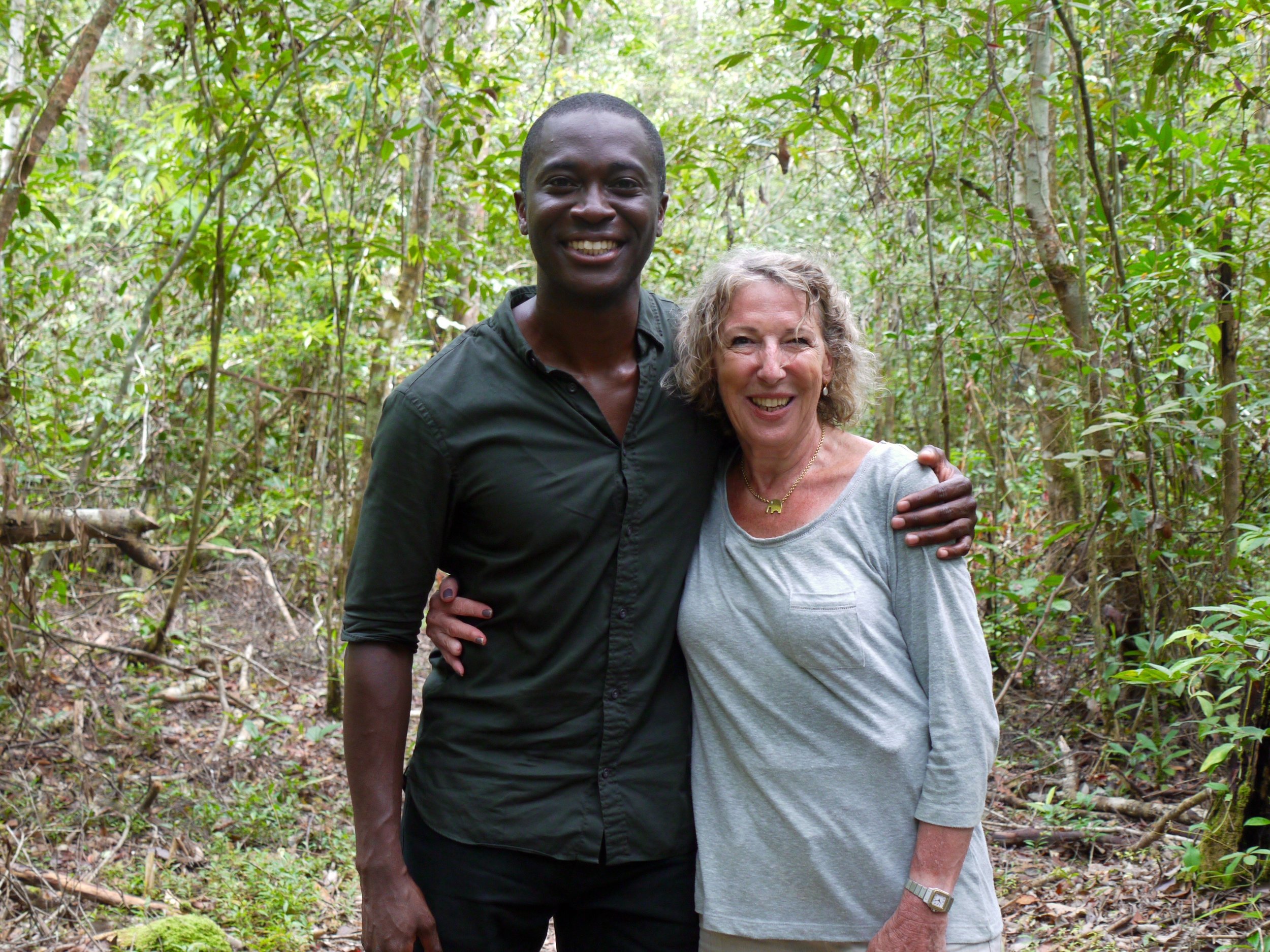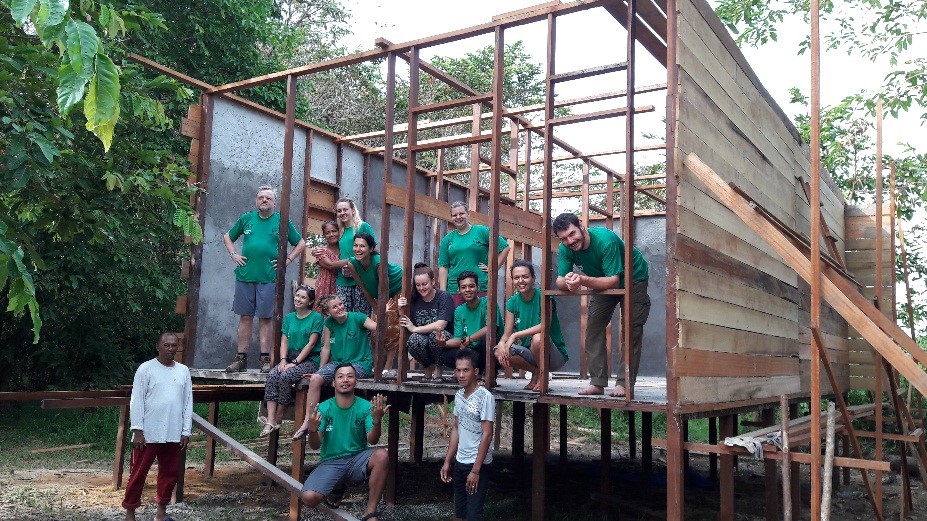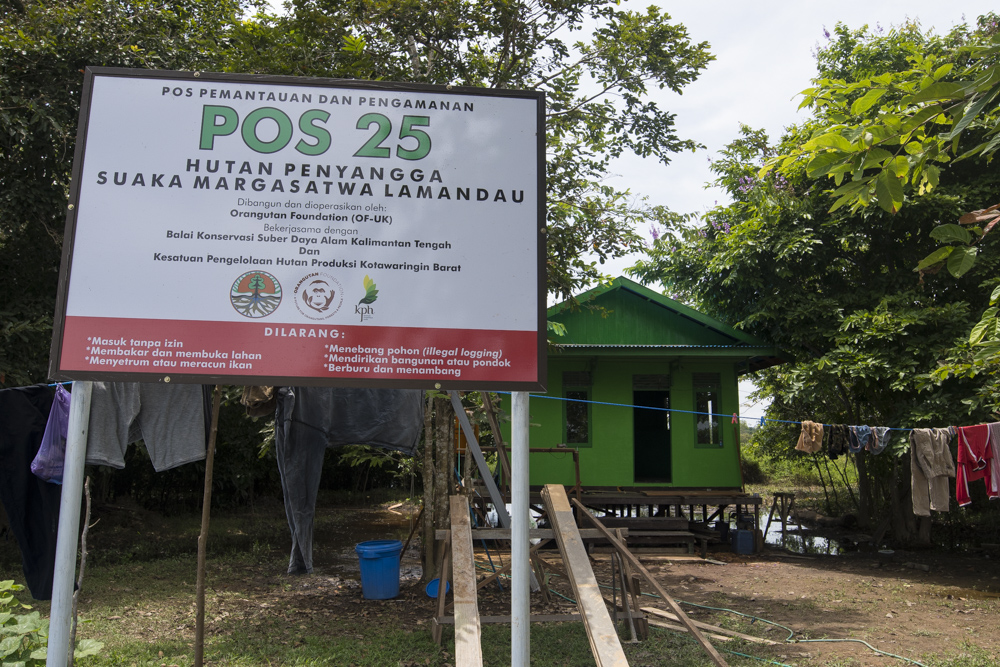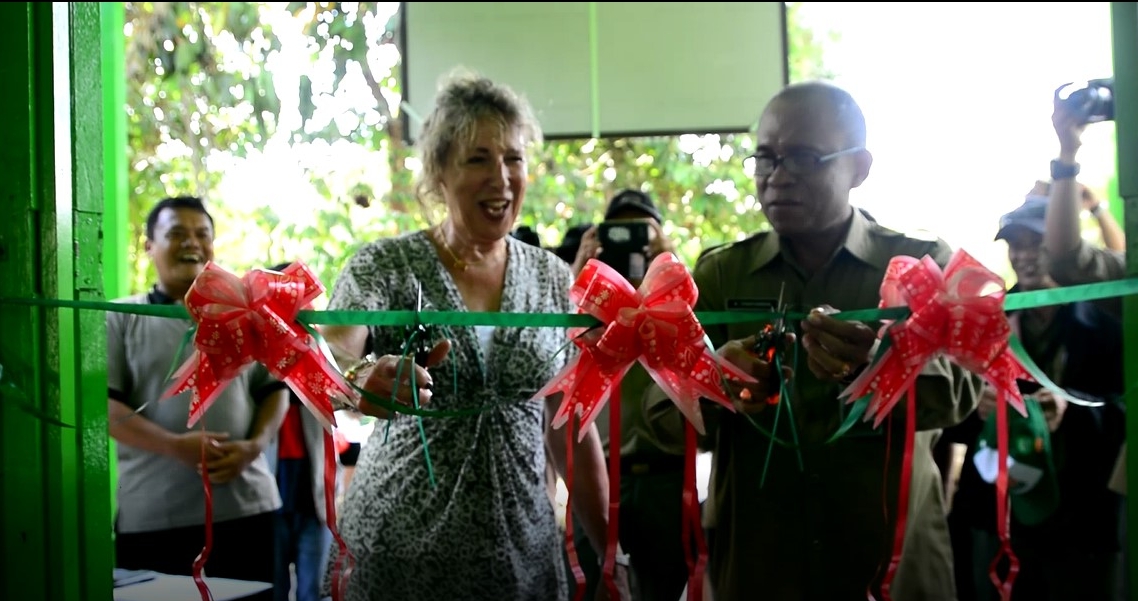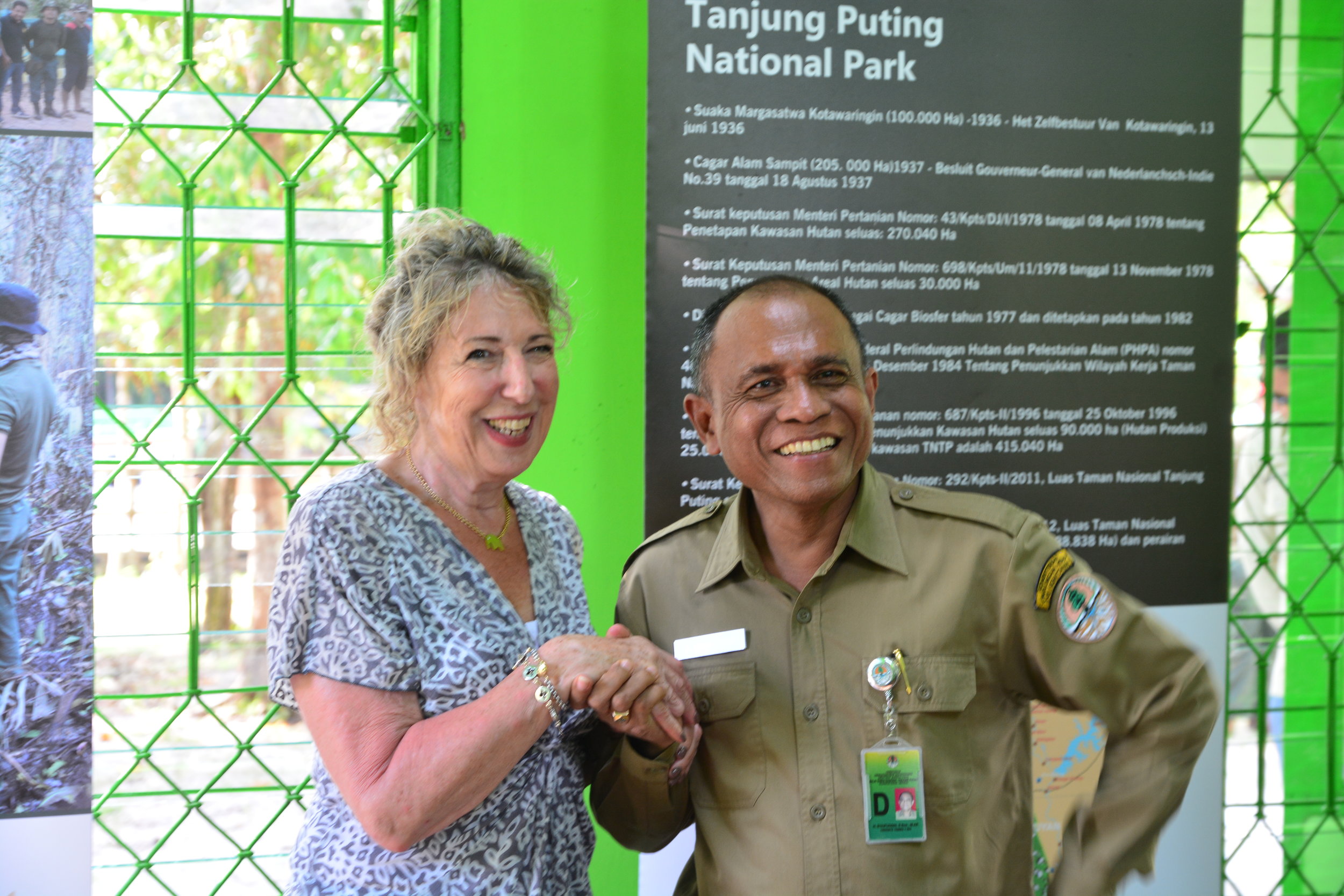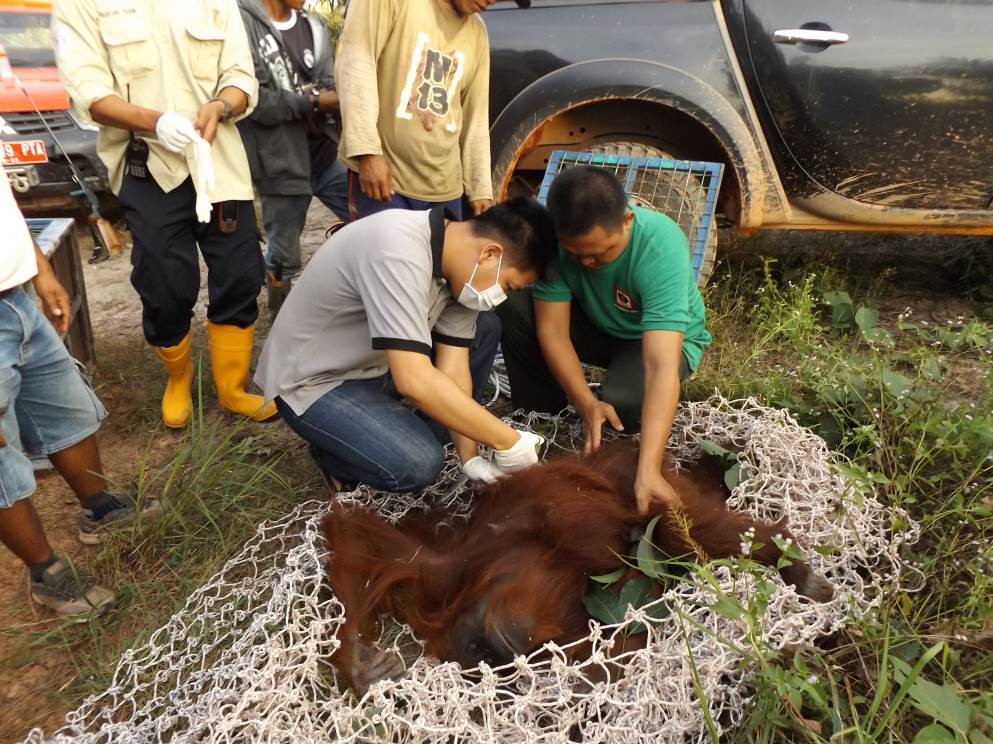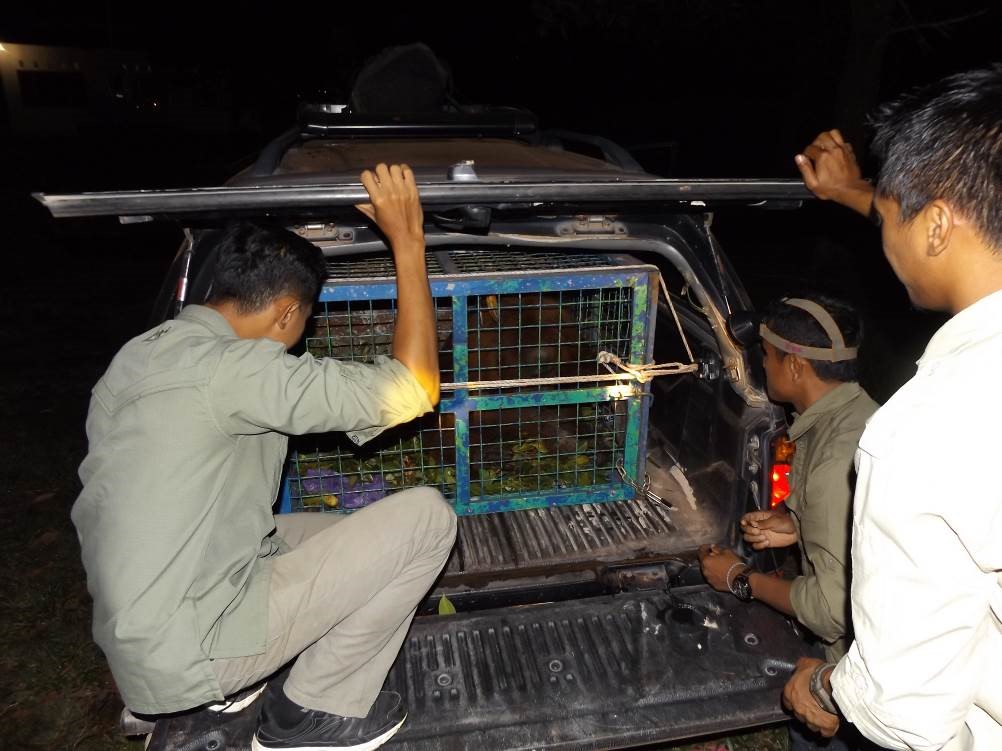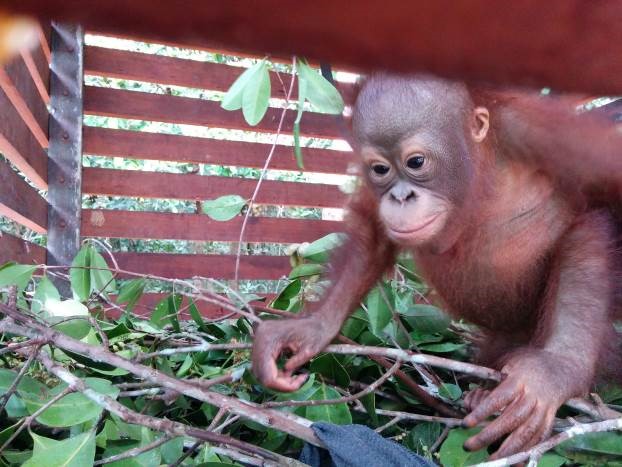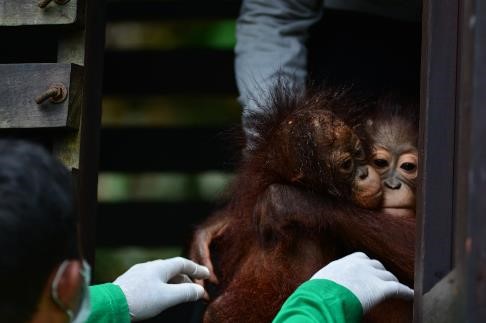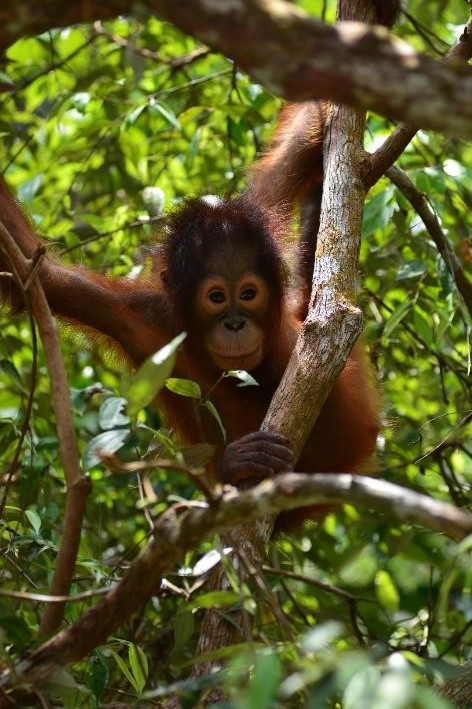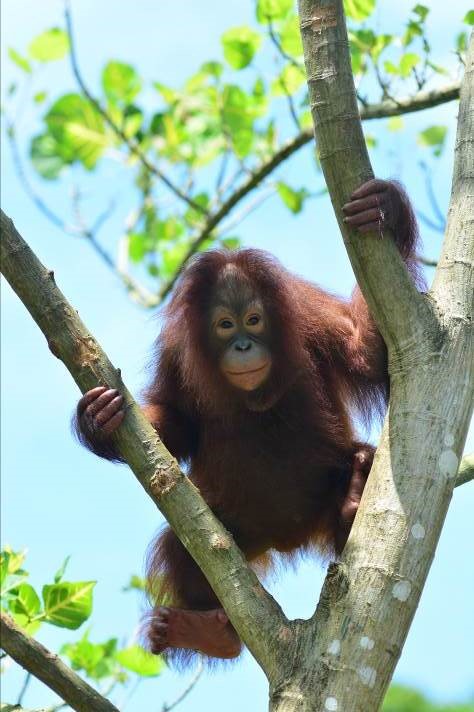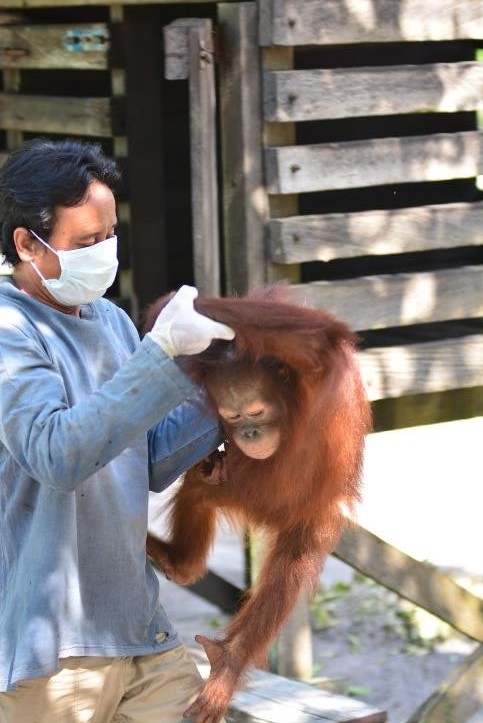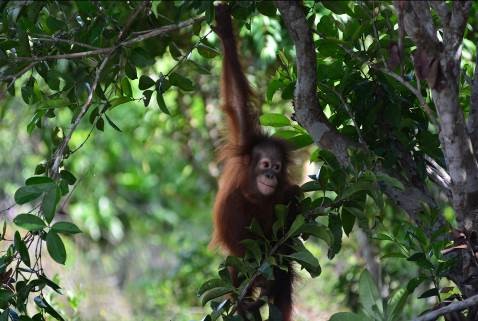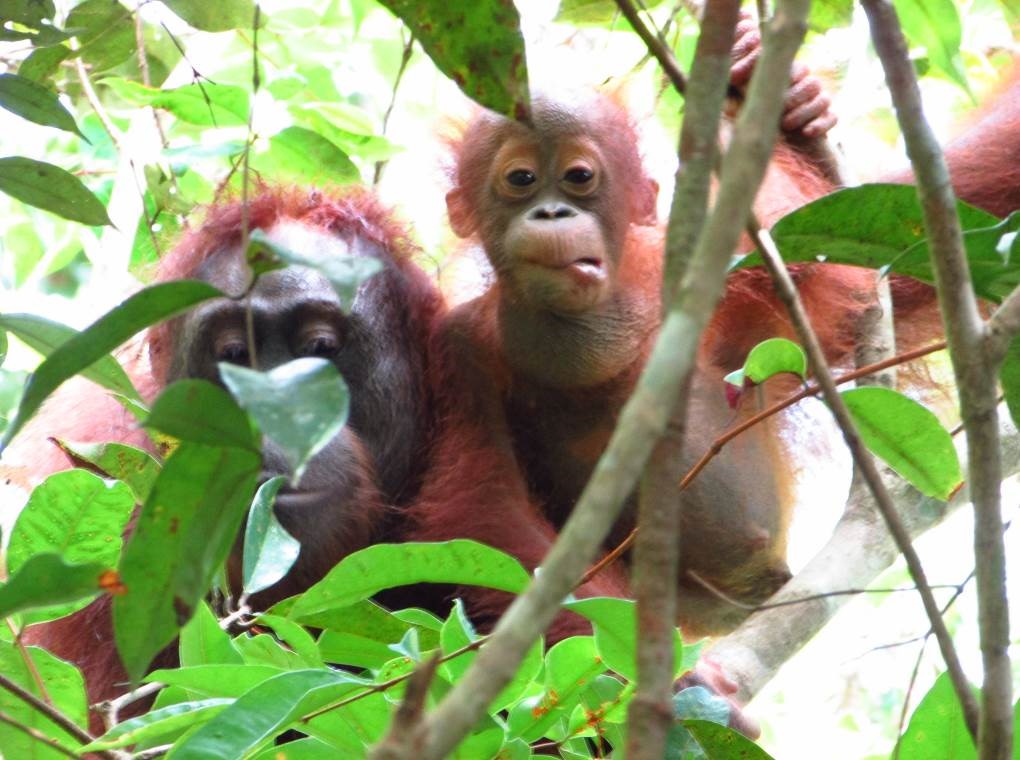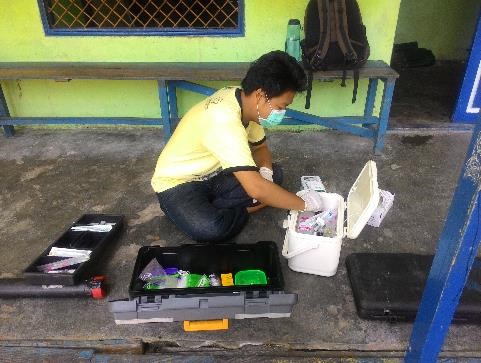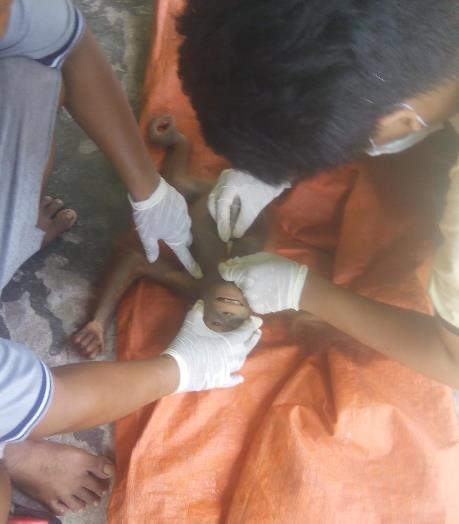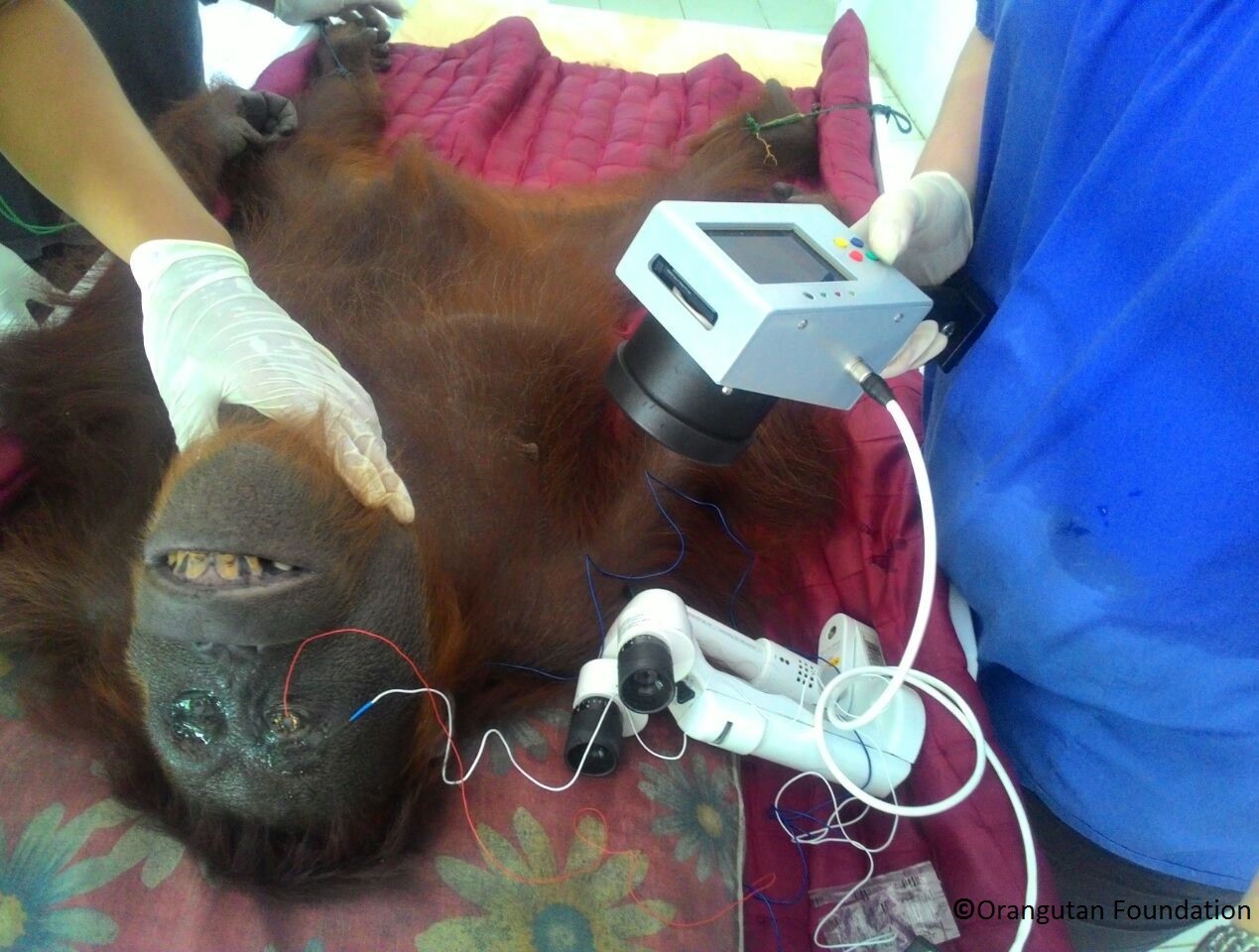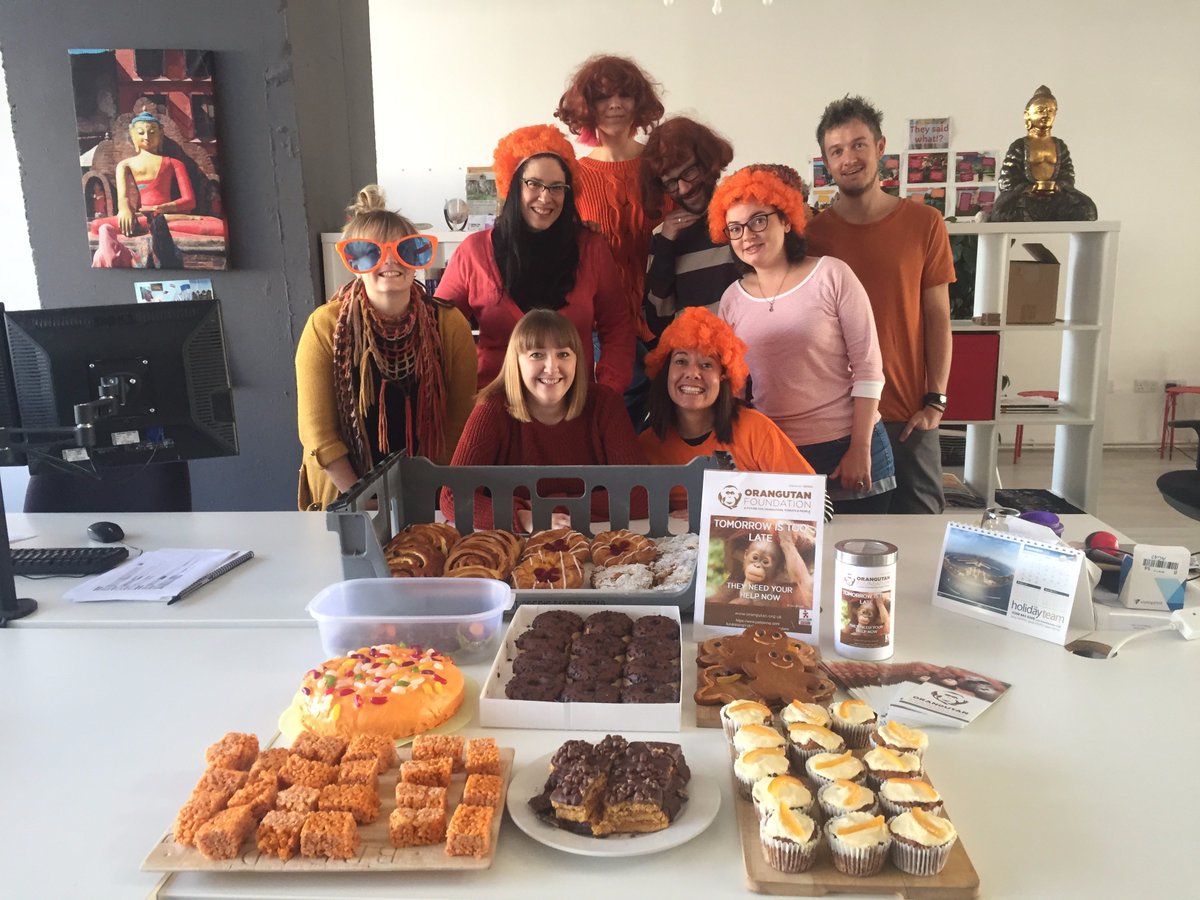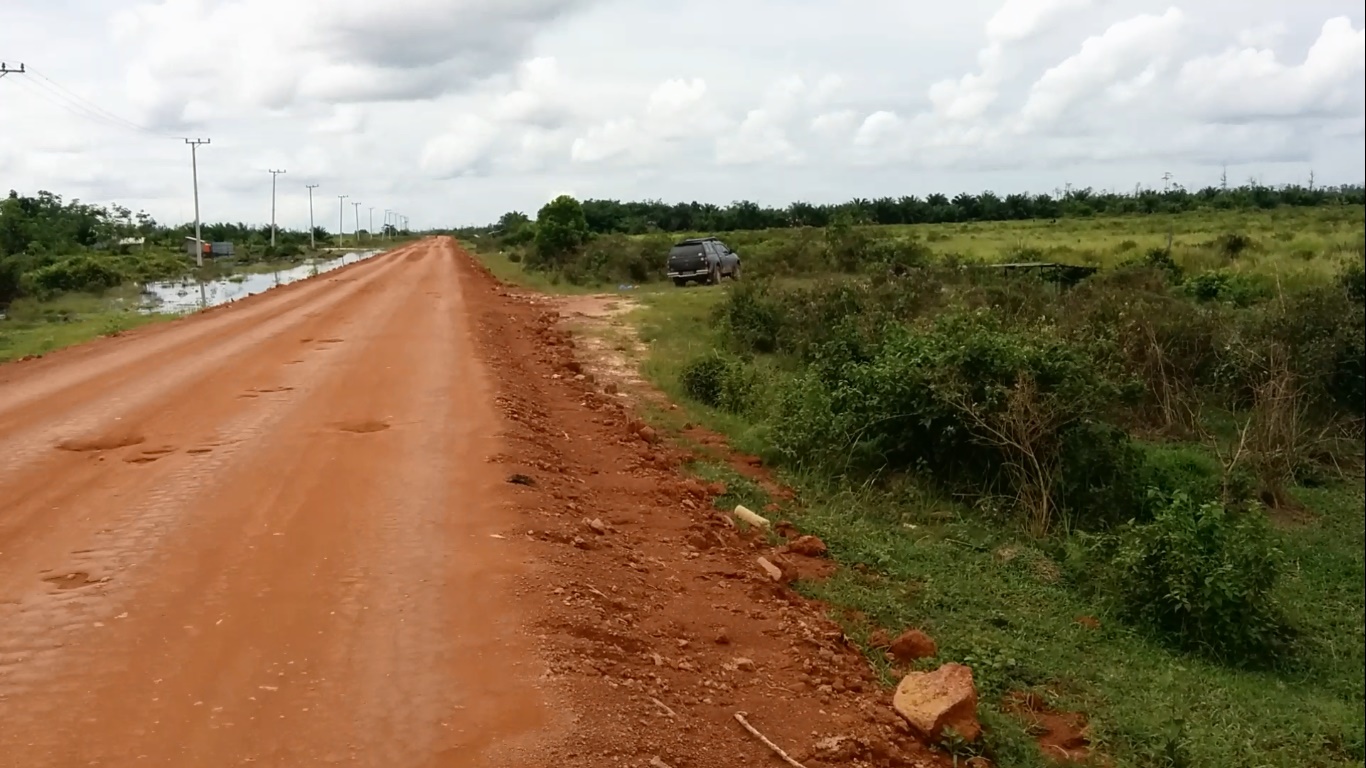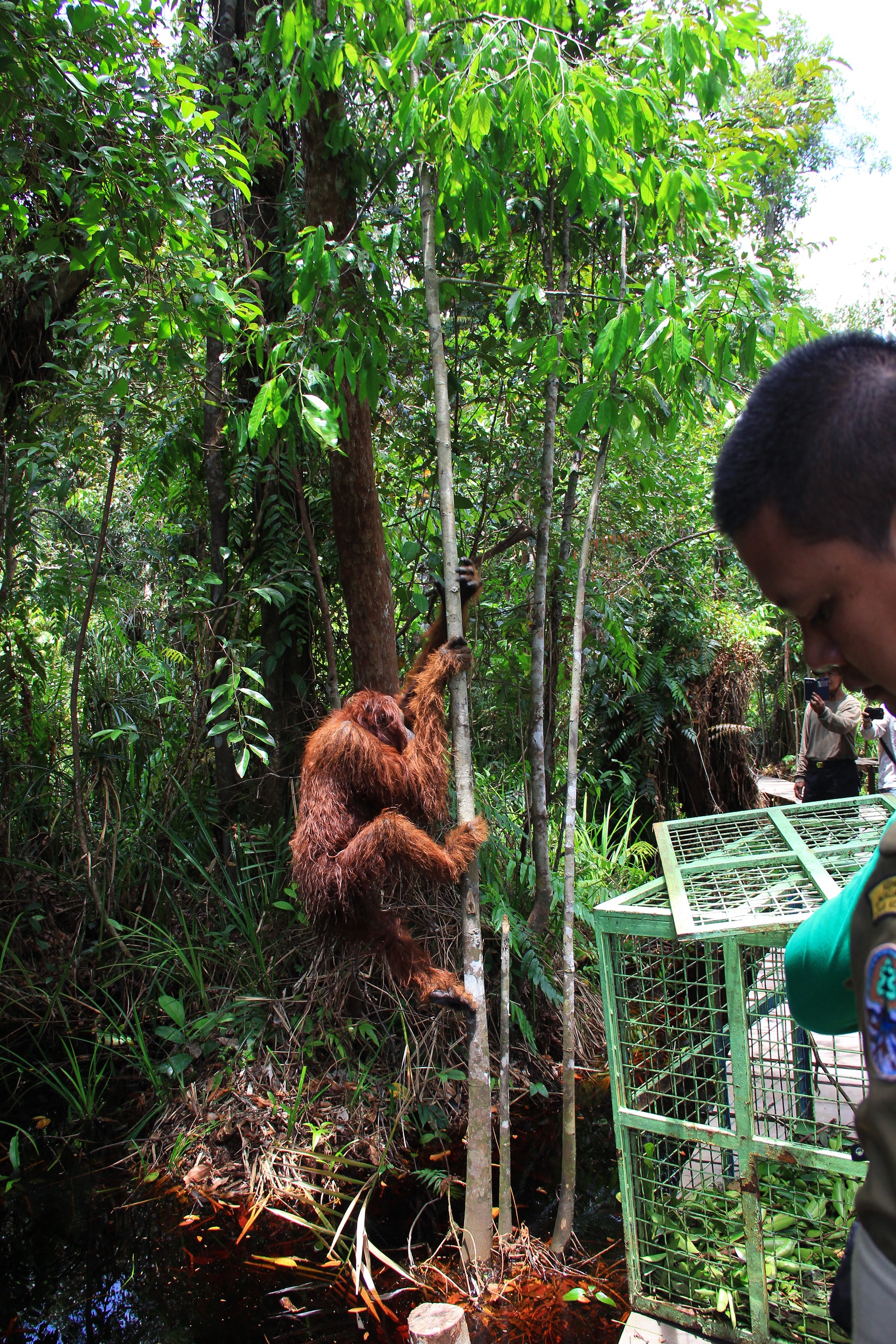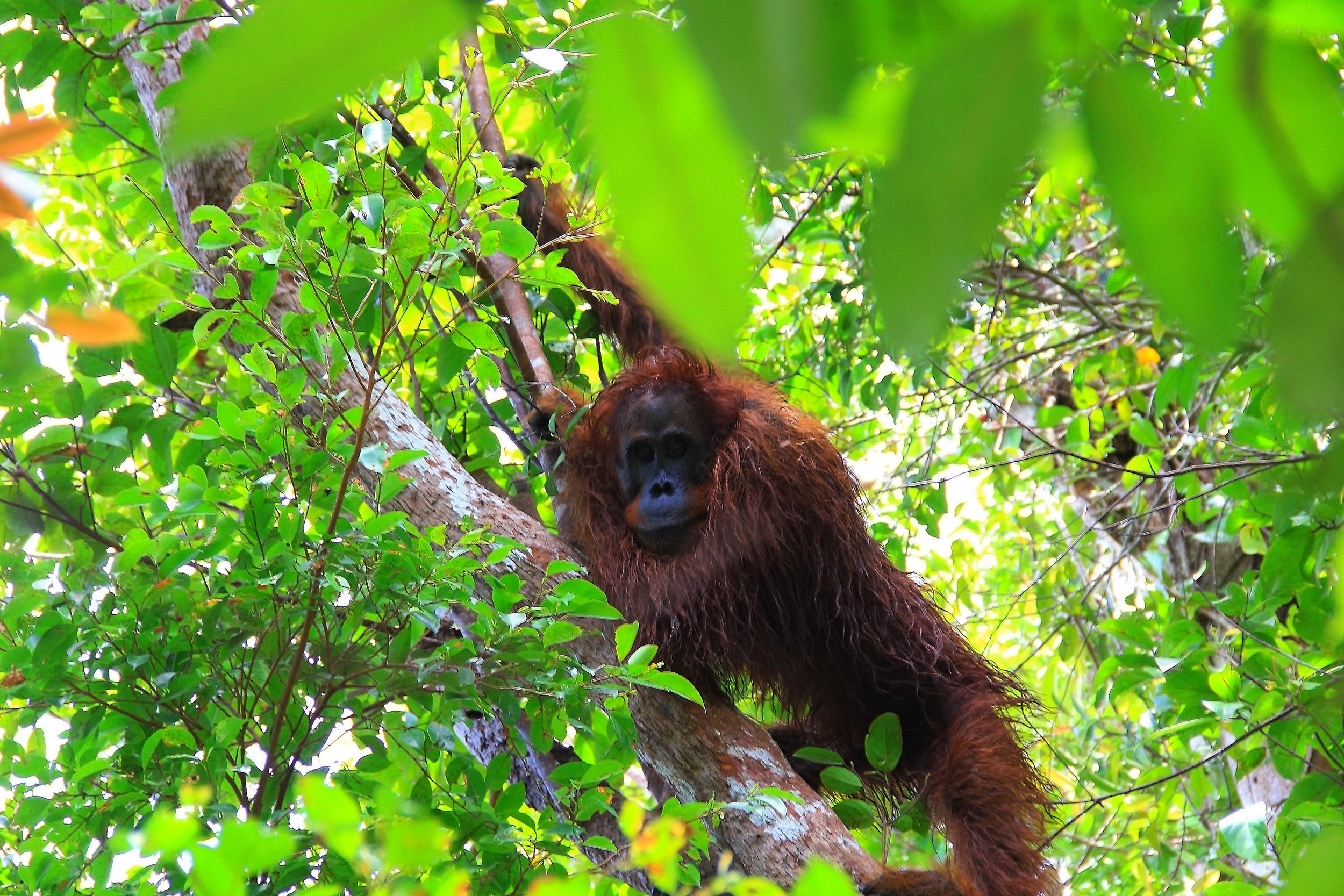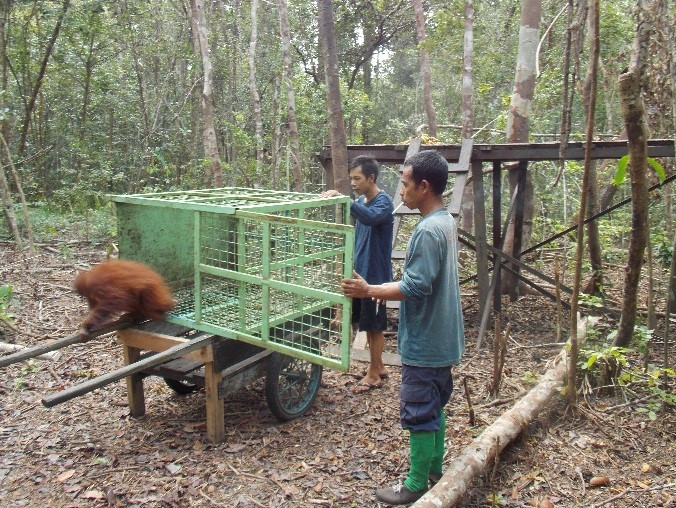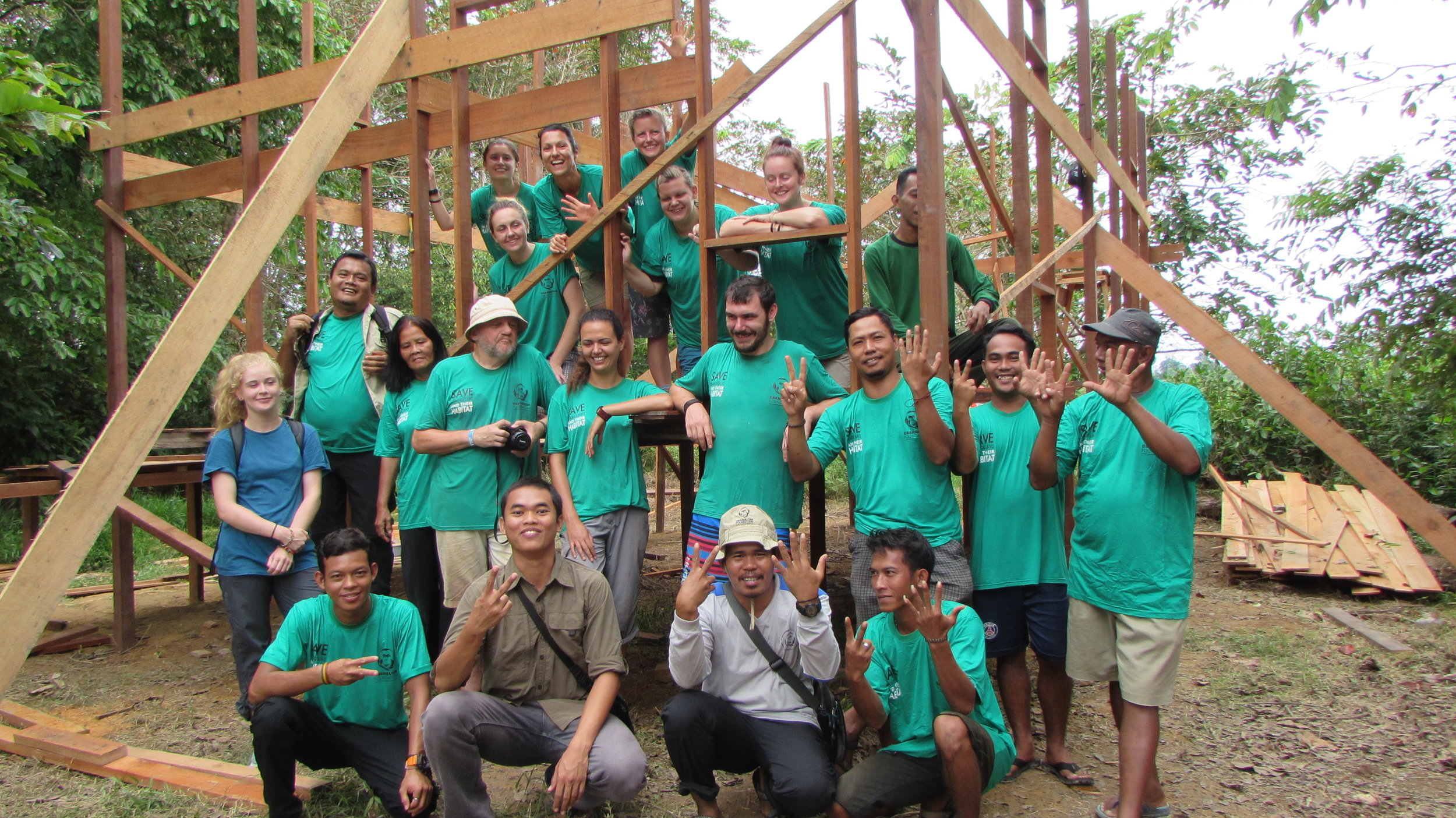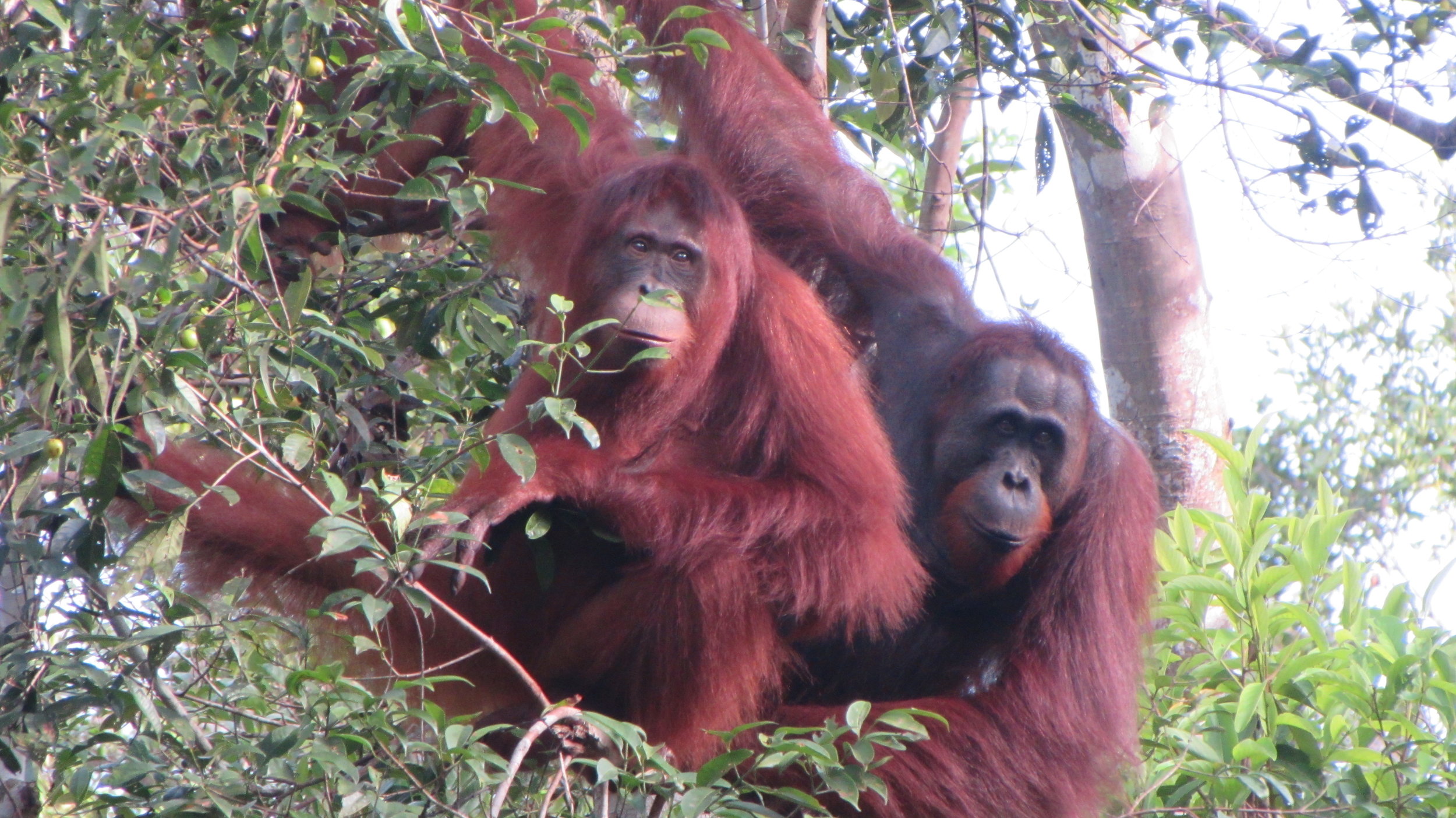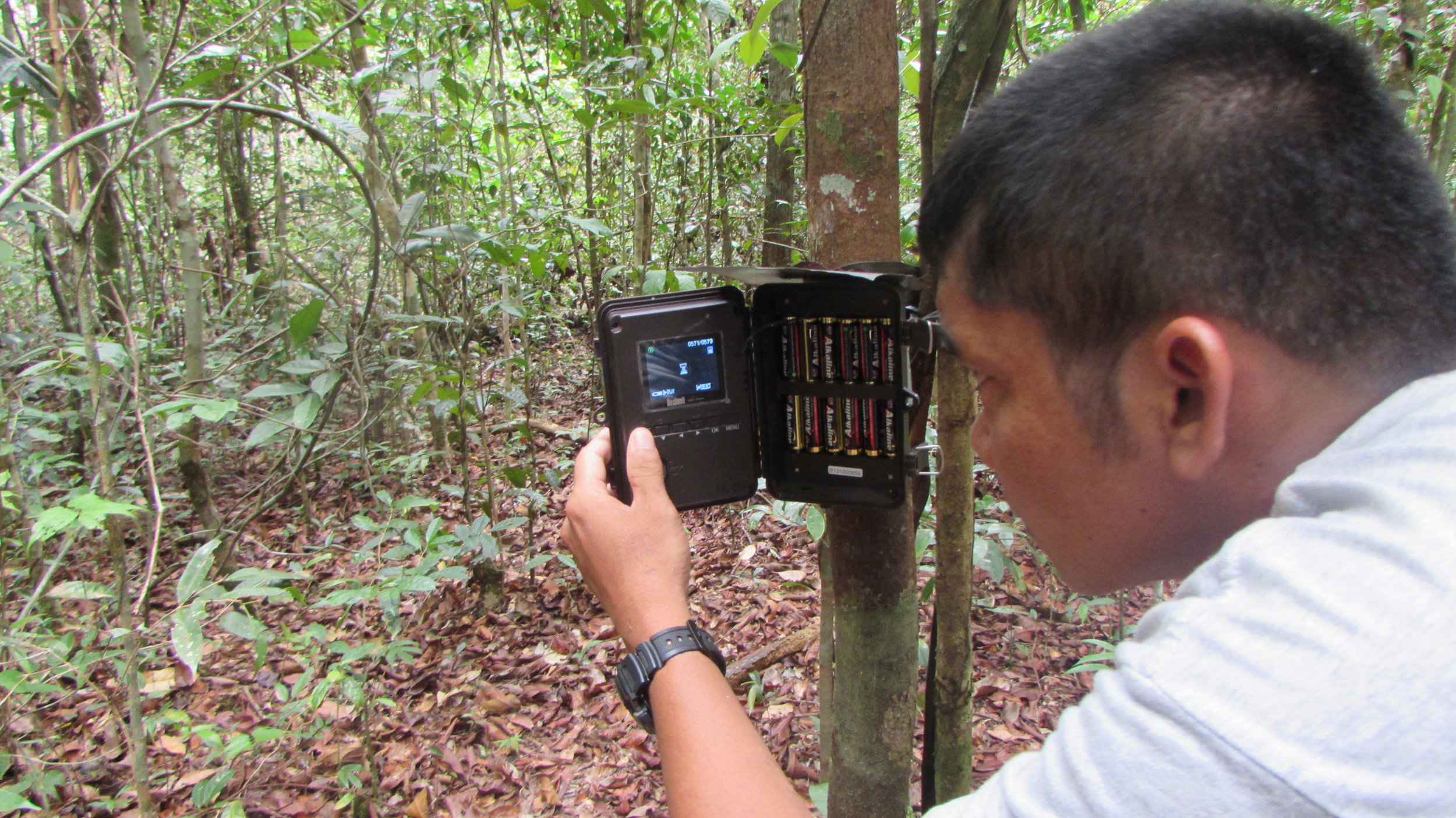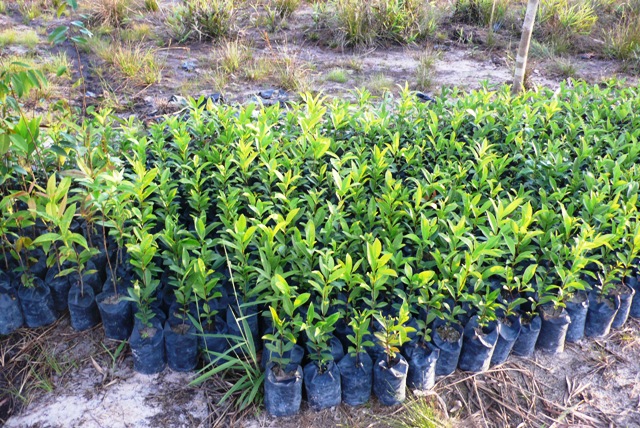Cautious optimism for blind orangutan Aan
Claudia Hartley, the ophthalmic surgeon, and her team in Borneo have been in touch to say they are cautiously optimistic that the procedure, to remove the cataract from Aan's eye, has worked. The optic nerve looked fine, which is a great sign. Aan took a long time to come round from the anaesthetic and her eyes were still closed as it started to get dark. Orangutan Foundation field staff will keep a close eye on Aan overnight and Claudia and her team will return in the morning to assess Aan’s vision.
We are still keeping our fingers crossed that her vision will be good enough for her to be released back into the wild.
Thank you to everyone who has donated to help Aan. We will keep you updated when we hear more from the field.
Here's a short video of Aan, before the operation.
[video width="960" height="544" mp4="http://www.orangutan.org.uk/blog/wp-content/uploads/2017/02/VID-20170202-WA0000-1.mp4"][/video]
Images of newborn orangutan
We are delighted to share these wonderful images of a newborn orangutan, taken by Azhari, the Orangutan Foundation's Orangutan Reintroduction Manager. The mother is Paula and she was released into the Lamandau Wildlife Reserve, Indonesian Borneo, in 2003. Her new baby, who has been named Paul, was born 25th December.
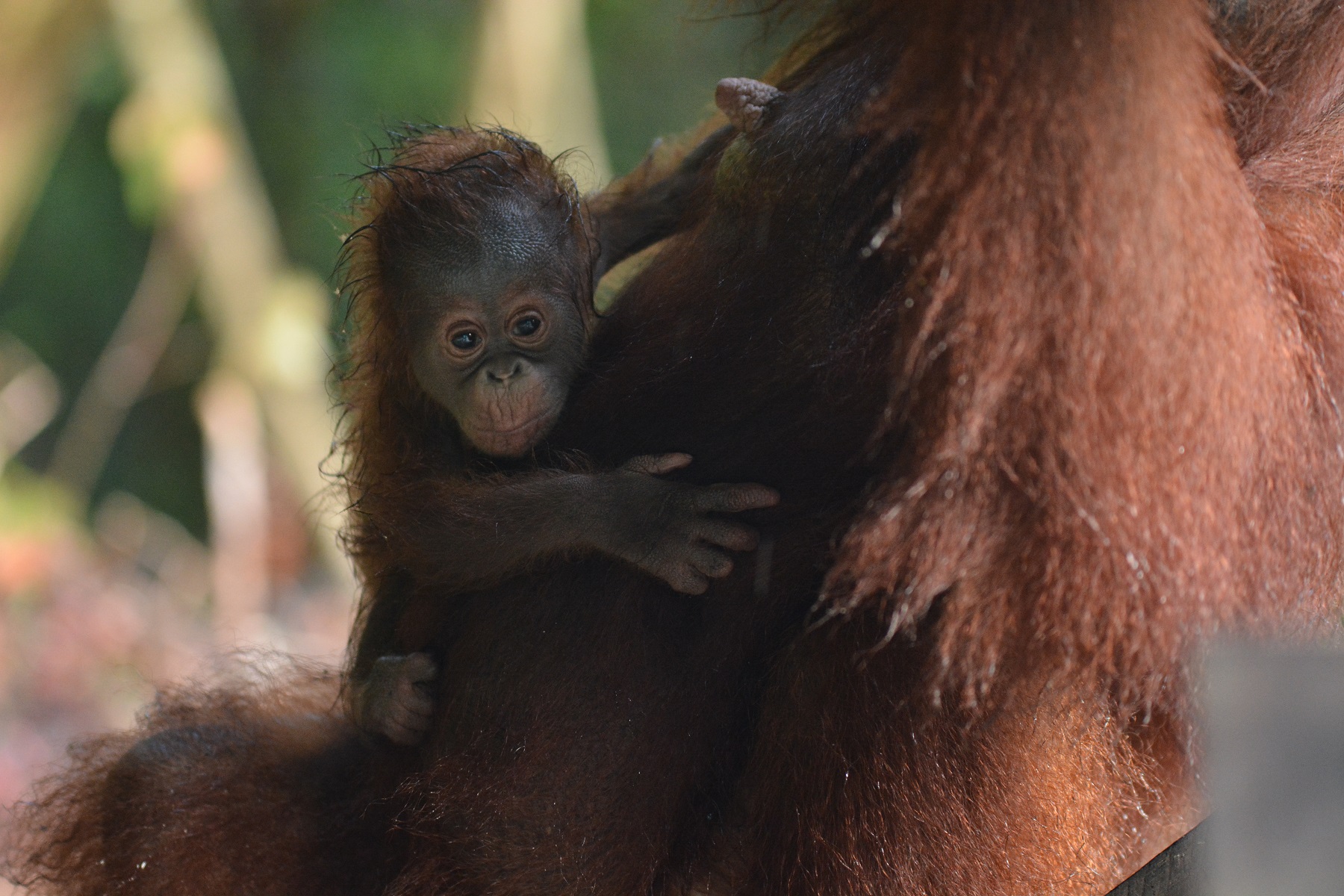
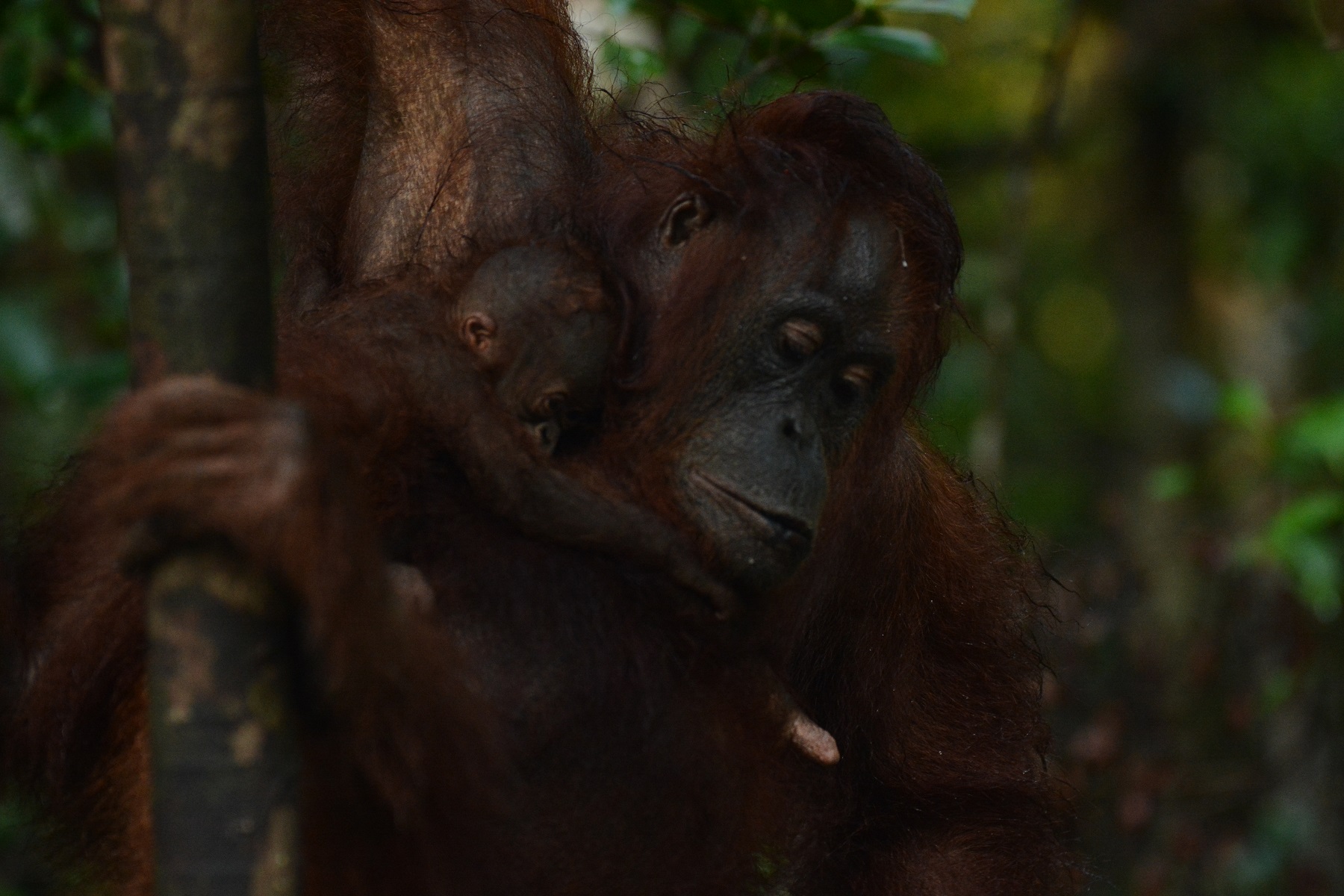
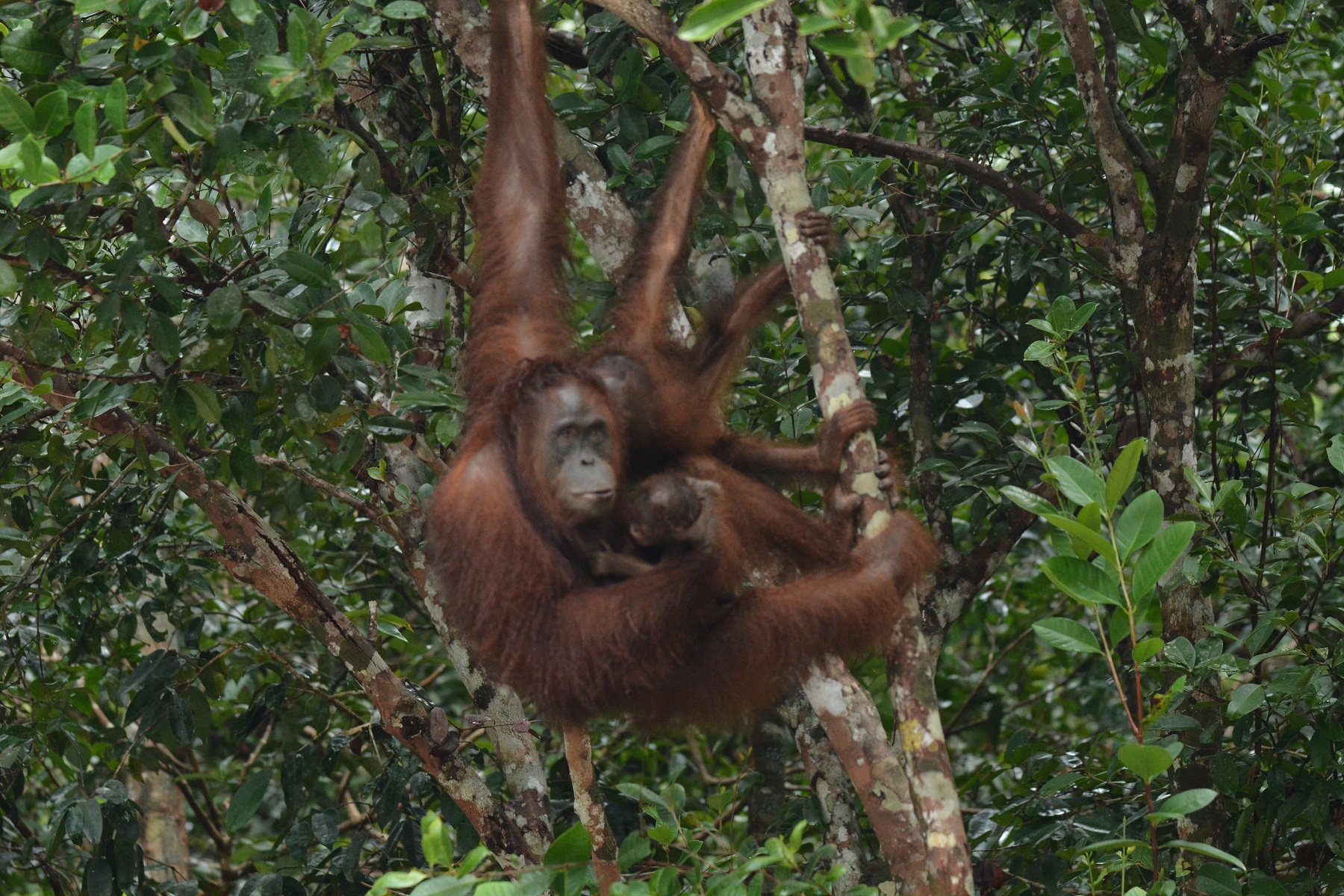

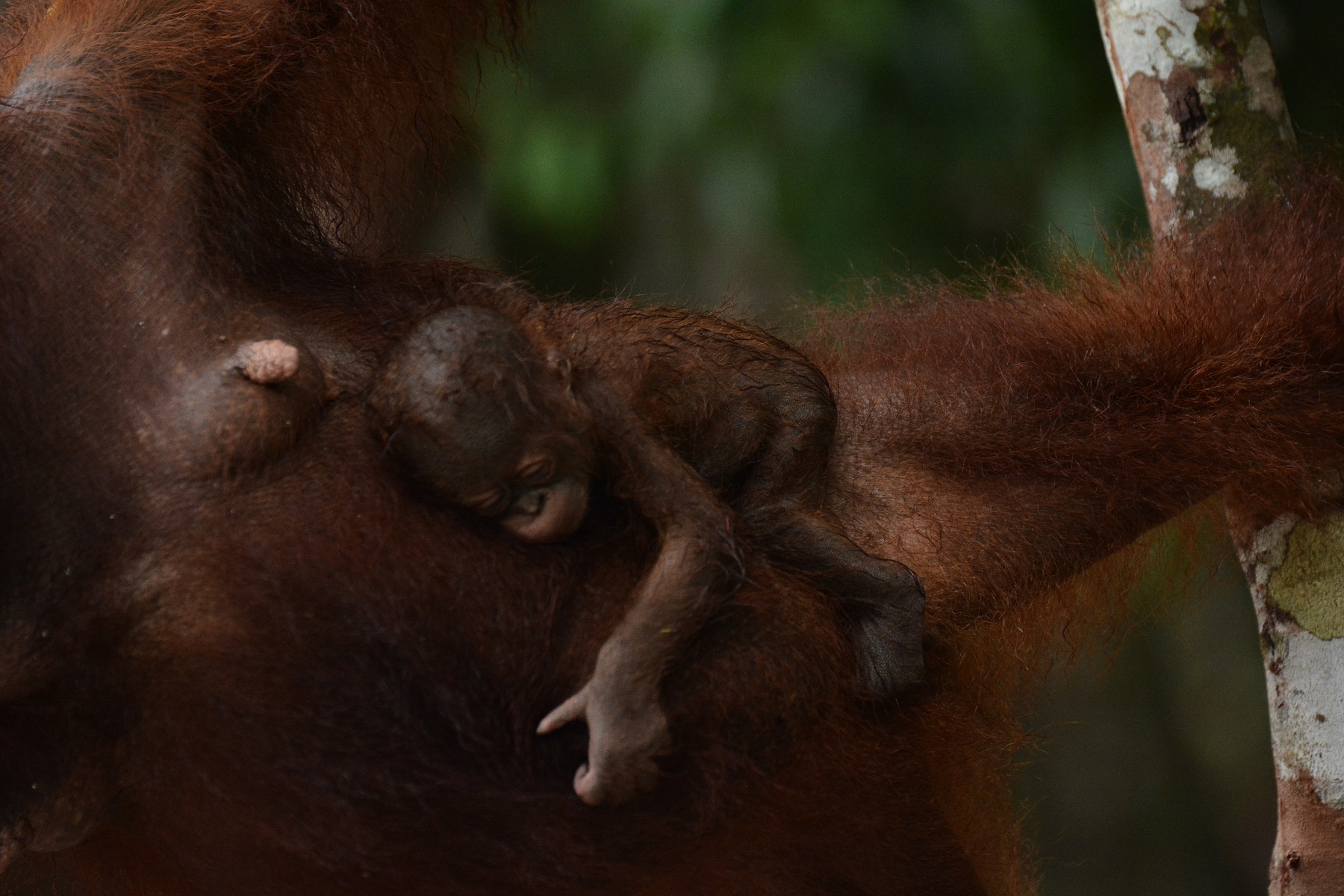
Donate to help us protect the Lamandau Wildlife Reserve, key habitat of the critically endangered orangutan.
Thank you,
Orangutan Foundation
Saltwater crocodile and kite translocated to safety
Here is a blog post by Azhari Purbatrapsila, the Orangutan Foundation's Reintroduction Manager. But, as you will see, it is not just orangutans that the Orangutan Foundation rescue and release. On 12 January 2017, I and Jakir (Forest Patrol Manager) translocated one saltwater crocodile and one black-winged kite to the Lamandau Wildlife Reserve, Central Kalimantan, Indonesian Borneo. Translocation was done together with SKW II BKSDA Kalteng (Indonesian Nature Conservation Agency). The crocodile is about 1 meter in length and is in a healthy condition.
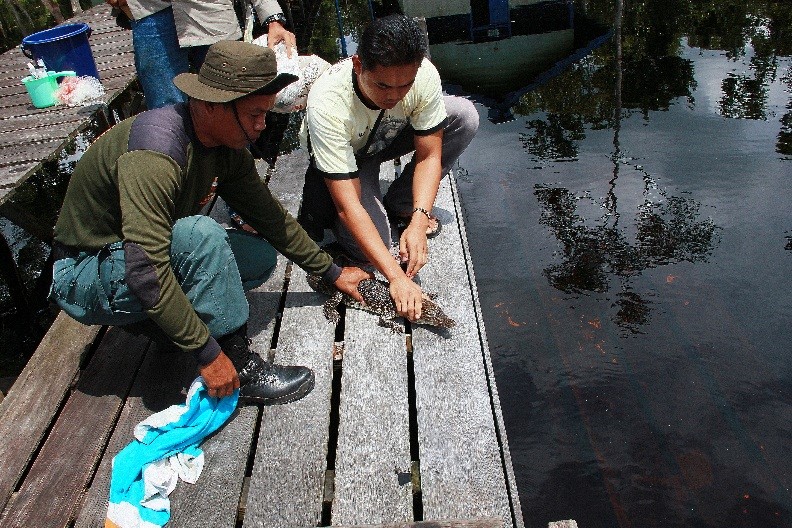
Unlike the crocodile, the kite was not in a good condition. It looks like the kite was kept in a small cage so its wings are really weak. Although its wing are full (no missing feathers), some of the feathers are not in good shape. The kite and the crocodile were handed over from the community.
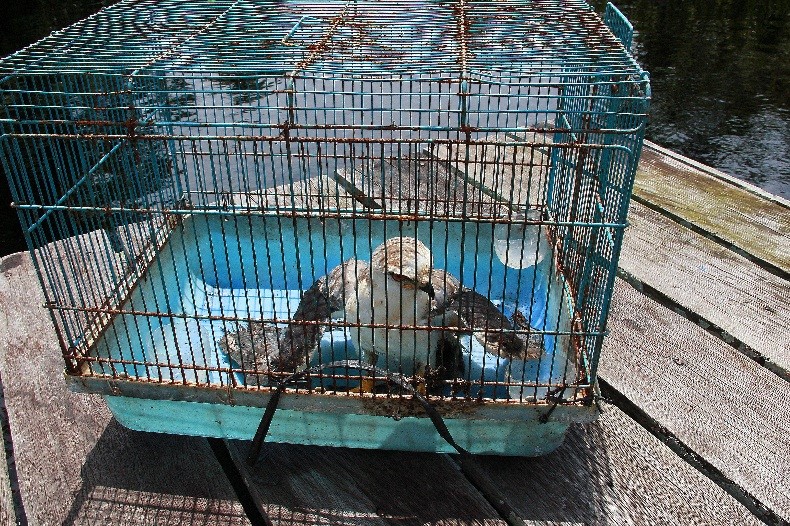
After confirmation of the translocation, we left the Orangutan Foundation office at 10am and went to the BKSDA office to pick up BKSDA staff and the animals. We drove to the speedboat jetty and went directly by boat to Camp Buluh, within the Reserve.
Firstly, we released the crocodile, which swam away from us before it dived into the river and wasn't seen again.
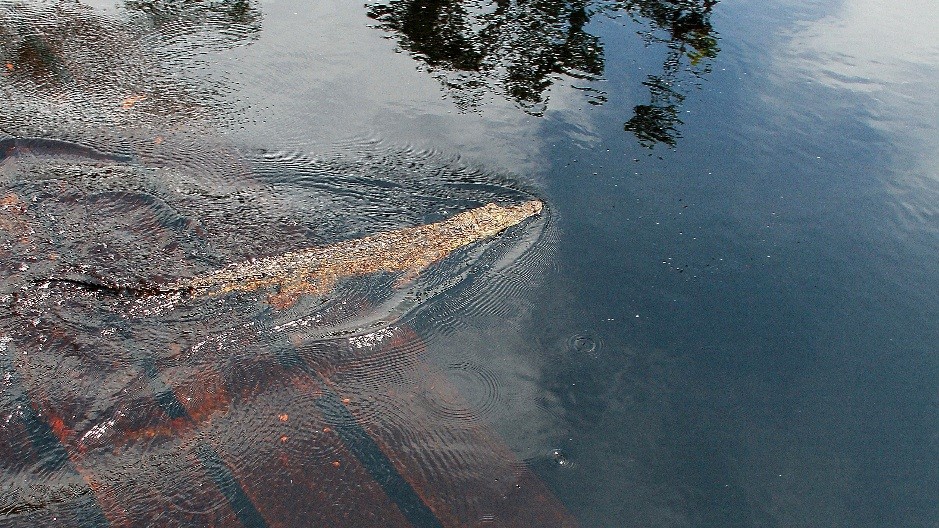
After, we released the kite onto a tree which is usually used by soft-release orangutans who are learning to climb.
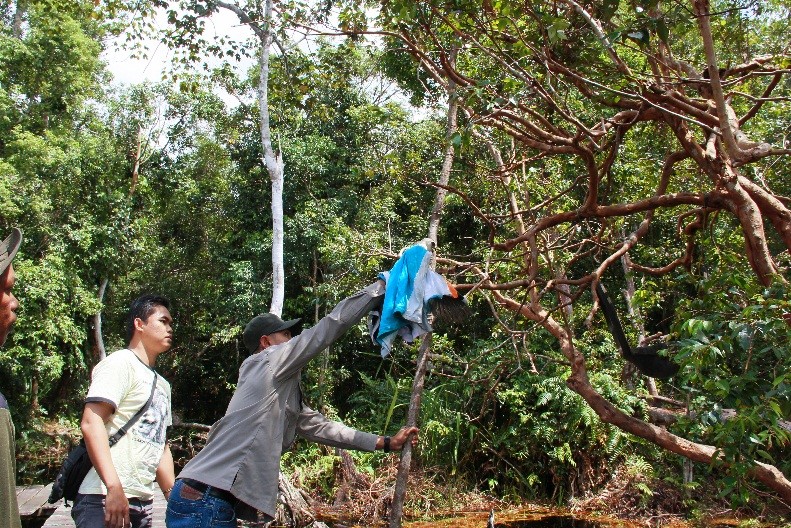

After several minutes of staying on the branch, the kite tried to fly. Unfortunately, the kite unable to fly properly and it fell into the swamp water next to the camp building.
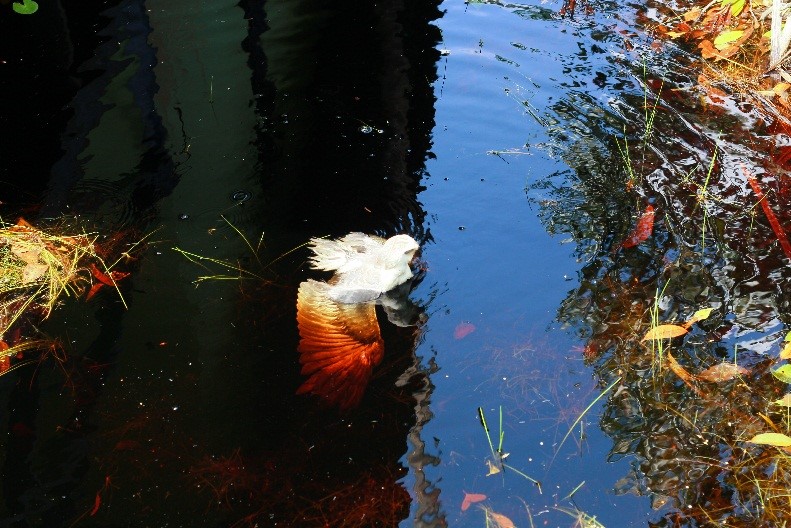
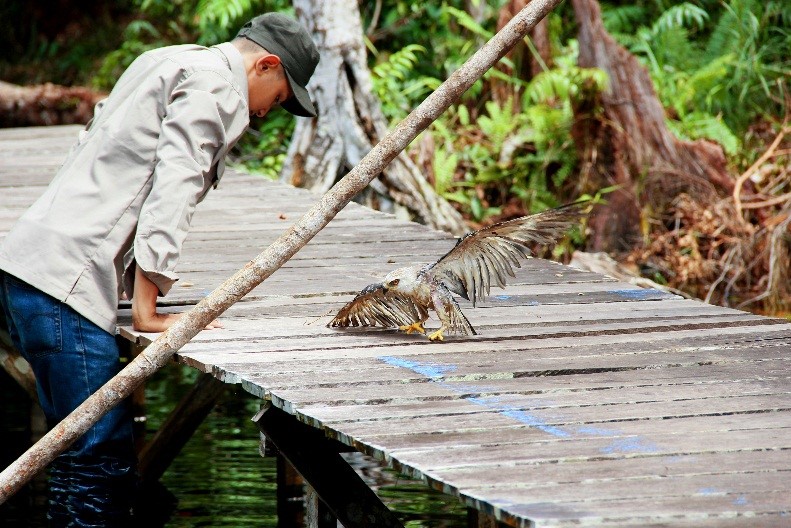
We decided to put the kite in an empty orangutan enclosure and let the camp staff take care of it until its healthy and strong enough and can fly. Hopefully the kite's condition will improve quickly so it can be released and be wild again. We will keep you updated.
Thank you,
Azhari
Orangutan Foundation
Miners evicted from Wildlife Reserve in Borneo
Protecting the habitat of the critically endangered orangutan is our number one priority but also our biggest ongoing challenge - we have to prevent illegal activity. Last month, illegal gold and zircon miners were evicted from the Lamandau Wildlife Reserve, Central Kalimantan, Indonesian Borneo. This Wildlife Reserve provides a second chance of survival for orangutans that have been rescued from oil palm plantations or other areas where they are a risk.
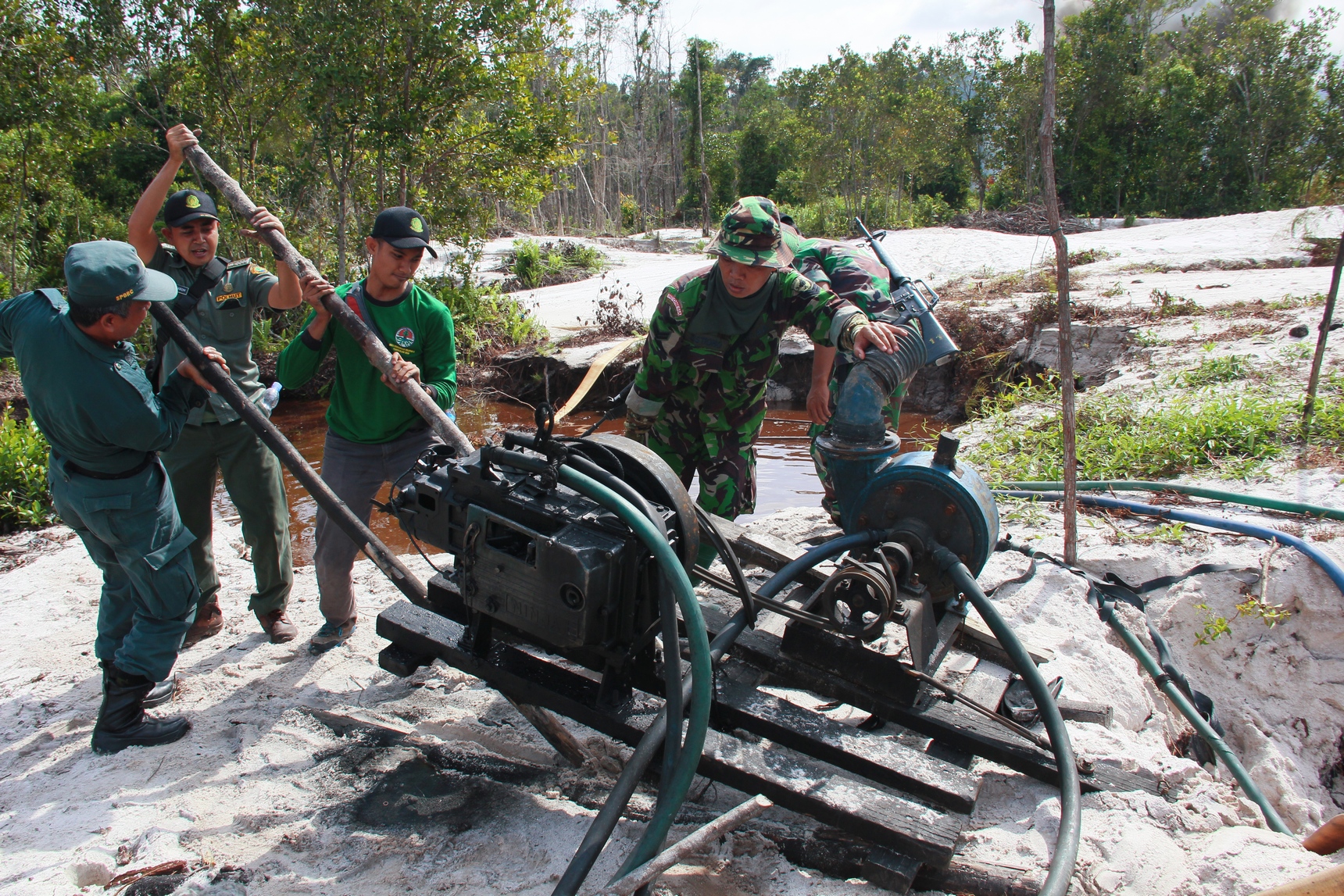
To protect the Reserve, Orangutan Foundation have built eight guard posts from which regular forest and river patrols are launched in collaboration with the Indonesian Nature Conservation Agency (BKSDA). It is a huge undertaking keeping the Reserve (64,000 hectares) free from illegal activity.

Illegal mining was first detected months ago, by the Orangutan Foundation’s forest patrol teams. Frustratingly, we do not have the authority to evict or stop the miners but can only inform them that they are acting illegally and gather evidence to report to BKSDA. To evict the miners and their equipment, the Forestry Police and Indonesian military are involved.

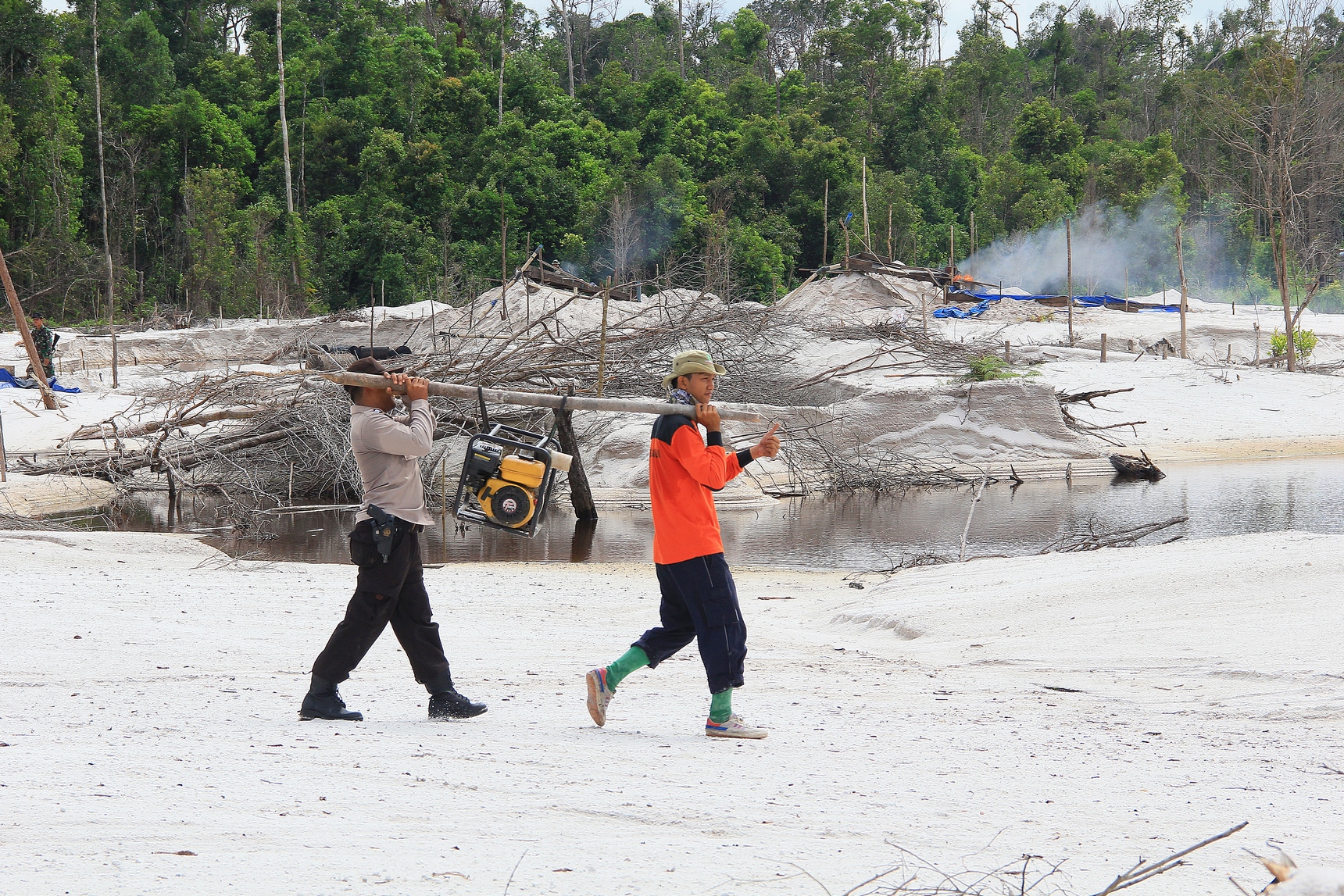
Thankfully the miners and their equipment are now gone. We remain vigilant and will try to prevent the miners starting up again.The mining process devastates the forest ecosystem, destroying orangutan habitat. If the Orangutan Foundation stopped actively protecting the Reserve then its precious wildlife and this globally important ecosystem, with huge stores of carbon, would very likely be destroyed and lost. Please help us to keep the forest protected. Click here to donate.
Thank you.
Orangutan Foundation
Orangutan Foundation: 2016 in pictures and numbers. A huge thank you for your support.
 6,000 wild Bornean orangutans live in the Belantikan region. The largest population outside of a protected area. Orangutan Foundation actively engages key stakeholders to conserve this critical tropical forest ecosystem.
6,000 wild Bornean orangutans live in the Belantikan region. The largest population outside of a protected area. Orangutan Foundation actively engages key stakeholders to conserve this critical tropical forest ecosystem. 33 wild orangutans rescued. One particularly poignant rescue was Narti, who was found completely stranded, clinging to the burnt remnants of a tree surrounded by oil palms.
33 wild orangutans rescued. One particularly poignant rescue was Narti, who was found completely stranded, clinging to the burnt remnants of a tree surrounded by oil palms.
 36 rescues of other wildlife species. All released into the safety of the Lamandau Wildlife Reserve.
36 rescues of other wildlife species. All released into the safety of the Lamandau Wildlife Reserve.
 16,000 Ubar tree seedlings nurtured and planted to restore areas of the Lamandau Wildlife Reserve damaged by forest fires in 2015.
16,000 Ubar tree seedlings nurtured and planted to restore areas of the Lamandau Wildlife Reserve damaged by forest fires in 2015.
 One new patron. Patrick Aryee and Offspring Films visited our work in Borneo to film for “Monkeys: An Amazing Animal Family”, a three-part series which first aired on Sky 1, on Christmas day. Star of the show, was Okto who was charmed by Patrick’s presenting skills!
One new patron. Patrick Aryee and Offspring Films visited our work in Borneo to film for “Monkeys: An Amazing Animal Family”, a three-part series which first aired on Sky 1, on Christmas day. Star of the show, was Okto who was charmed by Patrick’s presenting skills!
 Eight volunteers and one new guard post. In July, the construction of Guard Post 25 began. Now up and running, this guard post is critical for the protection of the new 8,000 hectare extension of the Lamandau Wildlife Reserve.
Eight volunteers and one new guard post. In July, the construction of Guard Post 25 began. Now up and running, this guard post is critical for the protection of the new 8,000 hectare extension of the Lamandau Wildlife Reserve.
 Our 25th anniversary year saw the opening of Tanjung Harapan’s Information Centre, in Tanjung Tanjung Puting National Park. Renovated by our 2015 volunteers and designed by the Cube in Residence Programme.
Our 25th anniversary year saw the opening of Tanjung Harapan’s Information Centre, in Tanjung Tanjung Puting National Park. Renovated by our 2015 volunteers and designed by the Cube in Residence Programme.
 104 air rifle pellets were found in lodged in orangutan Aan, 32 of which in her head left her blind, in 2012. In October 2016, ophthalmic surgeon, Claudia Hartley, visited Aan to assess the permanence of her blindness.
104 air rifle pellets were found in lodged in orangutan Aan, 32 of which in her head left her blind, in 2012. In October 2016, ophthalmic surgeon, Claudia Hartley, visited Aan to assess the permanence of her blindness.
2016 - the highest number of orangutans rescued
As 2016 comes to an end, we have received news of yet another orangutan rescued from an oil-palm plantation - read our vet's blogpost below. Please support our vital work protecting orangutans and their globally important habitat - donate here Yesterday we attended a meeting with BKSDA (Indonesian Nature Conservation Agency). Whilst we were there Pak Agung, the head officer, received a call from an oil-palm plantation, in the Sampit area, to rescue an orangutan. The Orangutan Foundation's rescue team immediately jumped into action to respond to the rescue call.
After a 4 hour journey we arrived at the location and were immediately met by the authorities from the plantation office, who directed us to the orangutan. We found the orangutan in a tree. We used a tranquilliser gun and once anaesthetised, the orangutan was identified as female, around 16 years old and her weight is around 30 Kg.
The condition of her body looks thin, maybe because she lacks food. After examining, I give de-worming drug and vitamins to help restore her health. As the orangutan came round after the anaesthetic, her behaviour became very aggressive and she was quite stressed.
She will be translocated to the protected Lamandau Wildlife Reserve in the next few days, where she will be released back into the wild as soon as possible.
Thank you,
Steven - Orangutan Foundation Vet
Brahminy kites, Bornean sun bears and orangutans...
Blogpost by Steven Daud, Orangutan Foundation vet, in Central Kalimantan, Indonesian Borneo. Yesterday, 14 December 2016, we go by speedboat to the Camp Siswoyo and Camp Buluh, in Lamandu Wildlife Reserve, as part of our regular visits. First, we stopped at the Post Teringin Lama to check on a Brahminy kite, named Jack. He was obtained from citizens in Sampit. Jack came to us with many missing wing feathers so Jack cannot fly far away.
Because of that, we decided to put Jack at Guard Post Teringin Lama and the staff at the Post have responsibility of taking care of Jack. At first, Jack only at around the Post jetty, but now Jack seen already getting used to roost in the forest near the Post.
After Post Teringin Lama, we went to Release Camp Siswoyo for checking the latest condition of Bruno and Satria. Bruno is a Bornean sun bear and already in Camp Siswoyo since October and seemed to have a skin problem, but due to treatment it’s much better.
Satria is an orangutan undergoing soft release. Rescued in June and is about 2 and ½ years old and he is in a healthy condition and doing well. To stop infection by the parasite, I give anti-parasitic drugs to prevent transmission of disease, which I suspect comes from Bearded Pig.
Here is a video of two other young orangutans, Jessica and Timtom, in our soft-release programme, made by Azhari, our Orangutan Reintroduction manager.
Thank you,
Steven - Orangutan Foundation vet
Please support our work in returning these critically endangered orangutans and other wildlife species back to the wild, where they belong. Click to donate.
Thank you.
Wonderful images of young Bornean orangutans learning to survive in the wild
Here’s another field update, with some wonderful images, from Orangutan Foundation vet Steven Daud, on some of the younger orangutans in the Lamandau Wildlife Reserve, Indonesian Borneo. A couple of days ago, we made our routine health and monitoring visits to Camp Rasak and Camp JL, two orangutan release camps, within the Wildlife Reserve. This journey is by speedboat as the camps can only be accessed by river.
Our first stop was Camp Rasak, where orangutans Jessica, Timtom and Endut live. These orangutans are on a soft-release programme.
We took Jessica, Timtom and Endut out from their enclosure so they can learn to make a nest and play in the trees. Jessica’s ability to make the nest is clearly visible. While Timtom and Endut are seen to be very brave exploring the trees, where they hone their skills of survival.
Nowadays, the weather is unpredictable which has caused Timtom to catch a cold. We are giving Timtom vitamin supplements and medication to help her get healthy again.
After Camp Rasak we got back into the speedboat and went to camp JL to monitor Okto and Ketty. Before orangutans can be fully released back into the wild they must be able to make a nest to sleep in. Ketty has shown that she can make a nest. However, Okto still has difficulty with this skill and sometimes even tries to interrupt Ketty's nest-building.
In terms of health, Okto and Ketty are both in good condition and this is maintained by giving them vitamin supplements. To minimise disease transmission between the orangutans and humans, staff in contact with the orangutans must wear gloves and masks.
I hope you enjoy the photos.
Regards,
Steven (Orangutan Foundation Vet)
As always, we are immensely grateful to the Orangutan Foundation staff in Indonesia for their hard work and commitment. You can support this work by Adopting Okto (a unique Christmas present of real value) by visiting our online shop. There are plenty of other wonderful Christmas present ideas too. Last day for ordering before Christmas is Friday 16th December. Thank you.
Orangutan Foundation vet - infant orangutan's inflamed air sacs
Blogpost by Dr Steven, the Orangutan Foundation's vet. I went to Camp Rasak, in the Lamandau Wildlife Reserve (Indonesian Borneo) to check the condition of infant orangutan Ariel. Camp staff were concerned and had reported seeing Ariel with enlarged air sacs around his throat. Ariel is Acuy's son and aged about 22 months.
We arrived by speedboat and immediately began our search for Acuy and Ariel.
Once located we had to first anaesthetise Acuy, using a blowpipe and anaesthetic dart. After Acuy was sedated, Camp staff helped hold Ariel so he could be further examined.
I give a with very low dose of anaesthetic to Ariel because he was stressed. After Ariel calmed, I start taking samples in the neck area. It turns out there’s no fluid, which indicates the absence of bacterial infection and it only contained air.
After that, I take blood samples, give vitamin injection and de-worming drugs to Ariel and Acuy.
Monitoring is conducted periodically and on a recent routine visit to Camp Rasak I was pleased to see Ariel already doesn’t have any enlargement of air sacs around the neck.
Mother and son (and their companion Kotim, who was released in April 2016, and seems to like hanging around with them) fit and healthy.
Thank you.
Join the Orangutan Foundation to support this work or adopt Okto, one of our orphaned orangutans.
Second chance for blind orangutan
A blind Bornean orangutan, who was rescued from an oil-palm plantation, may have her sight restored and live in the wild again. The Orangutan Foundation have been caring for the orangutan, named Aan, since 2012 when she was found with 104 air rifle pellets in her, 37 lodged in her head. A three-hour operation removed 32 of the pellets but she was left blind which meant she couldn’t be returned to the wild.

An ophthalmic surgeon, Claudia Hartley, visited Aan to assess the permanence of her blindness. On examination, the ophthalmologist discovered there is a very high chance of restoring sight to one of Aan’s eyes.
Claudia Hartley will return to Central Kalimantan, Indonesian Borneo, with colleagues and specialist equipment in February 2017. They will operate to remove a cataract and, if successful, Aan will be returned to the wild, despite still being blind in one eye.
Aan is currently living in a purpose-built enclosure in the Lamandau Wildlife Reserve, which is where she will also hopefully begin her transition to living wild again.
The Orangutan Foundation actively protect the forests and precious wildlife within with guard posts and river patrols. This year, an extension to the Reserve was agreed by the Indonesian Government, adding an area the size of Guernsey to the protected forests. At a time when orangutans are critically endangered, due to habitat loss, this is a conservation success story.
Support the Orangutan Foundation and have your donation doubled through the Big Give Christmas Challenge from midday Tuesday 29 November to midday Friday 2 December https://secure.thebiggive.org.uk/project/futurefororangutans
Thank you,
Orangutan Foundation
A big thank you from Borneo
Orangutan Foundation staff have sent a thank you message from Borneo to all those who helped to raise awareness and funds during Orangutan Awareness Week.

In particular, thank you to All Things Wild, who ran a Primate Week and hosted a talk by Cathy Smith from Orangutan Foundation. After the talk Cathy said "it was wonderful to meet people who had been out to visit or volunteer for the Orangutan Foundation in Borneo but it was also great to talk to many new and interested people, who turned out on a cold and wet November evening!".
Thanks also to Rickshaw Travel for raising awareness all week and organising their own ginger bake off in aid of the Orangutan Foundation. Thanks to Sunnyside Primary School for going orange and to our dedicated member Steph Brown for her chocolate fundraiser.
The deadline has now passed for the Great Orangutan Bake Off #GOBO competition but thanks to those who entered. We will reveal the star bakers once our judges, Patrick Aryee and Ian Cumming have made their decisions!
Finally, save the dates! 29 November to 2 December. Your donations will be doubled through the Big Give Christmas Challenge and will help us to protect orangutan habitat.
Thank you!
Orangutan Foundation
The Situation Worsens
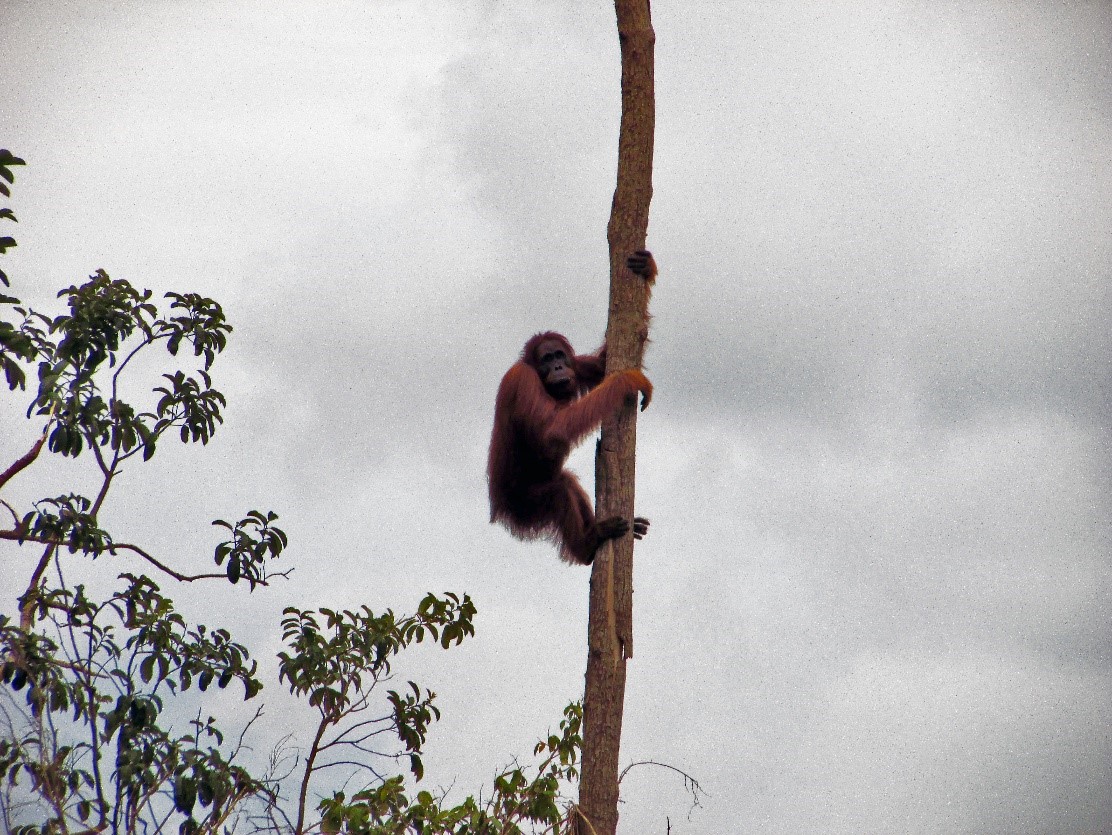 The Orangutan Foundation recently learned news of yet another orangutan found stranded with nowhere to go. Kolam, a male of around 10 years of age, is the ninth orangutan to have been found by the same stretch of road, built in the past few years to connect two towns. Before this road was built the only way to get to and from these towns was by boat, consequently people can now access areas of land they couldn’t before.
The Orangutan Foundation recently learned news of yet another orangutan found stranded with nowhere to go. Kolam, a male of around 10 years of age, is the ninth orangutan to have been found by the same stretch of road, built in the past few years to connect two towns. Before this road was built the only way to get to and from these towns was by boat, consequently people can now access areas of land they couldn’t before.
The forest which once stood is being cleared and orangutans, trying to reach a fruiting tree which once grew, are finding themselves stranded, surrounded by roads and villages.
Blood sampling results showed the orangutan to be in good health and free from contagious diseases which meant Kolam was released back into the wild in the Lamandau Wildlife Reserve, Central Kalimantan.
Dr. Ade Soeharso, our Program Manager in Indonesia congratulated the hard work of the excellent rescue team.
Please consider a donation to help the Foundation with our ever-growing need for more facilities to care for rescued orangutans.
(VIDEO) Rawit's Release
Two days ago the reintroduction team of the Orangutan Foundation successfully released another orangutan back into the forest of the Lamandau Wildlife Reserve where she belongs.
Found tied up in a villager's backyard just 2 weeks ago, this 5 year old female orangutan known as Rawit is now happily living back in the forest. A previously reintroduced female has taken her under her wing. Read about Rawit's story here.
We thank wildlife photographer and Orangutan Foundation supporter Ian Wood for documenting her release. For more information on Ian's work visit his website http://www.agoodplace.co.uk
The Story of Rawit
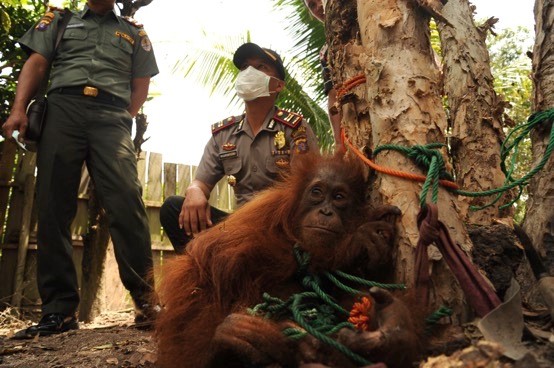 Once again we are seeing what happens to orangutans when they are stranded in pockets of forest with oil-palm on one side and villages on the other. On 18th October, a female orangutan of around 5 years of age was rescued in Central Kalimantan. This is the story of Rawit, as sent by our vet just a few days ago.
Once again we are seeing what happens to orangutans when they are stranded in pockets of forest with oil-palm on one side and villages on the other. On 18th October, a female orangutan of around 5 years of age was rescued in Central Kalimantan. This is the story of Rawit, as sent by our vet just a few days ago.
BKSDA (Indonesian Nature Conservation Agency) staff received news from local police that villagers had a young orangutan in their possession that they wished to surrender.
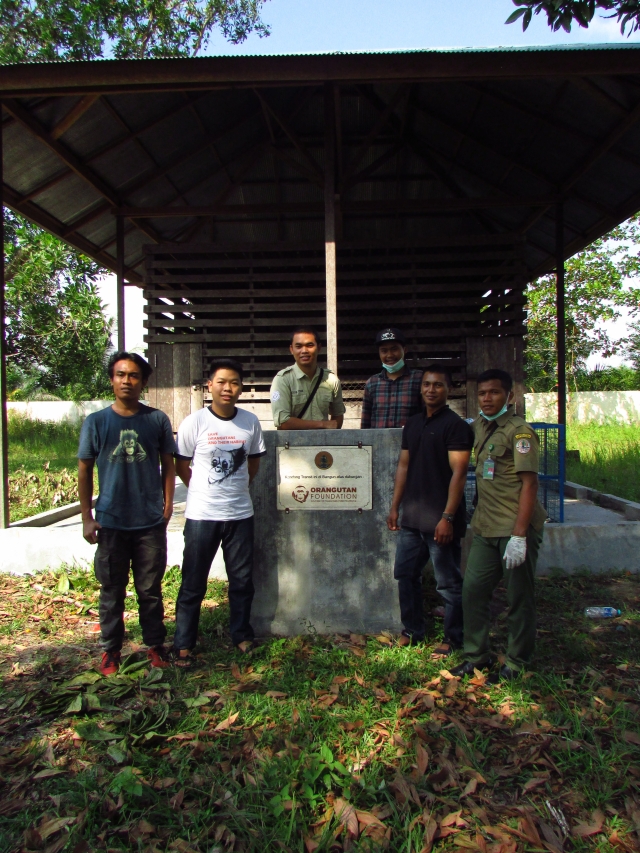
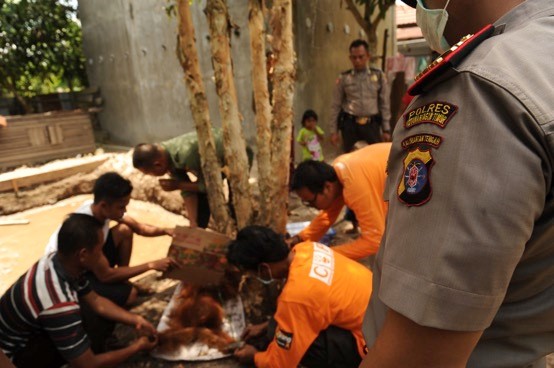
When the team arrived to confiscate Rawit, it was noticed immediately that her limbs were very swollen, especially her left wrist, as a result of being tied up.
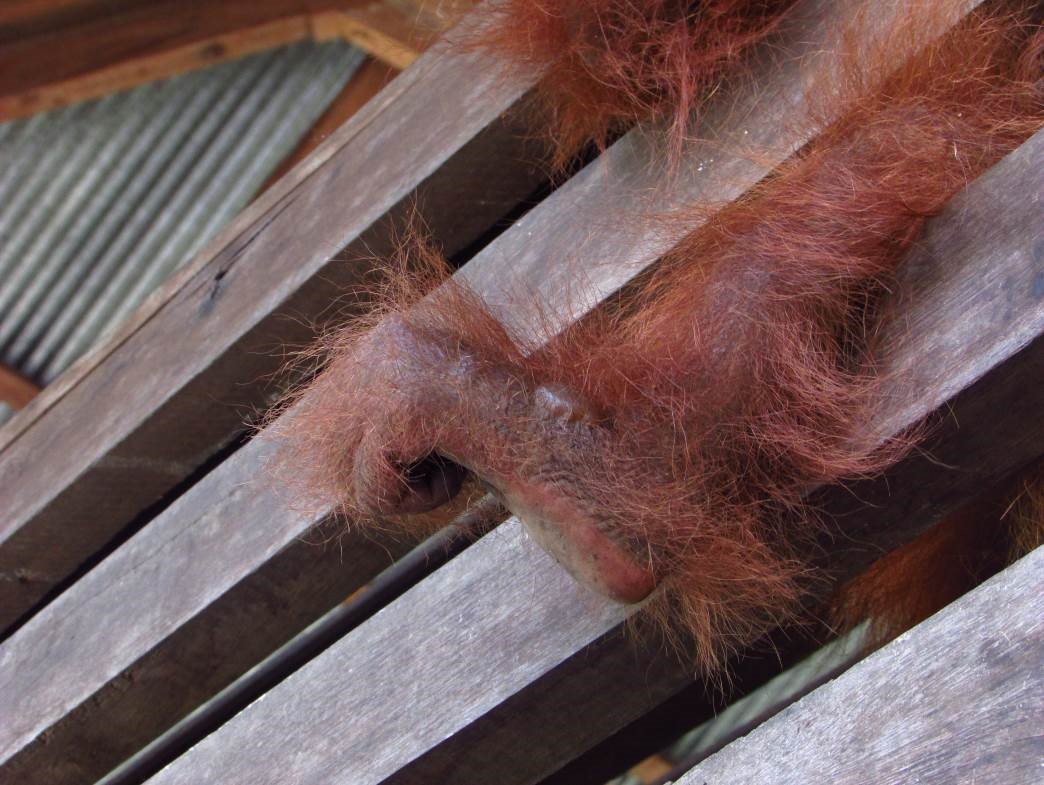
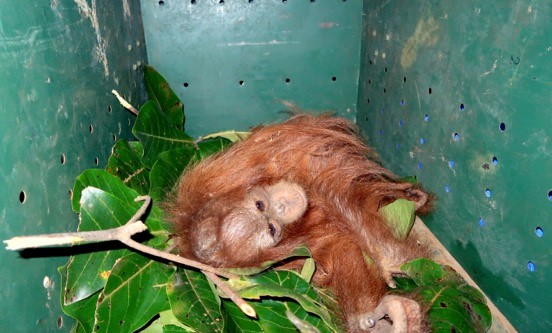
Shortly after the rescue, Rawit was placed in the Foundation’s care. After a couple of days of being cared for by our staff, the swelling was significantly reduced and Rawit was able to grasp the side of her cage which she couldn’t before.

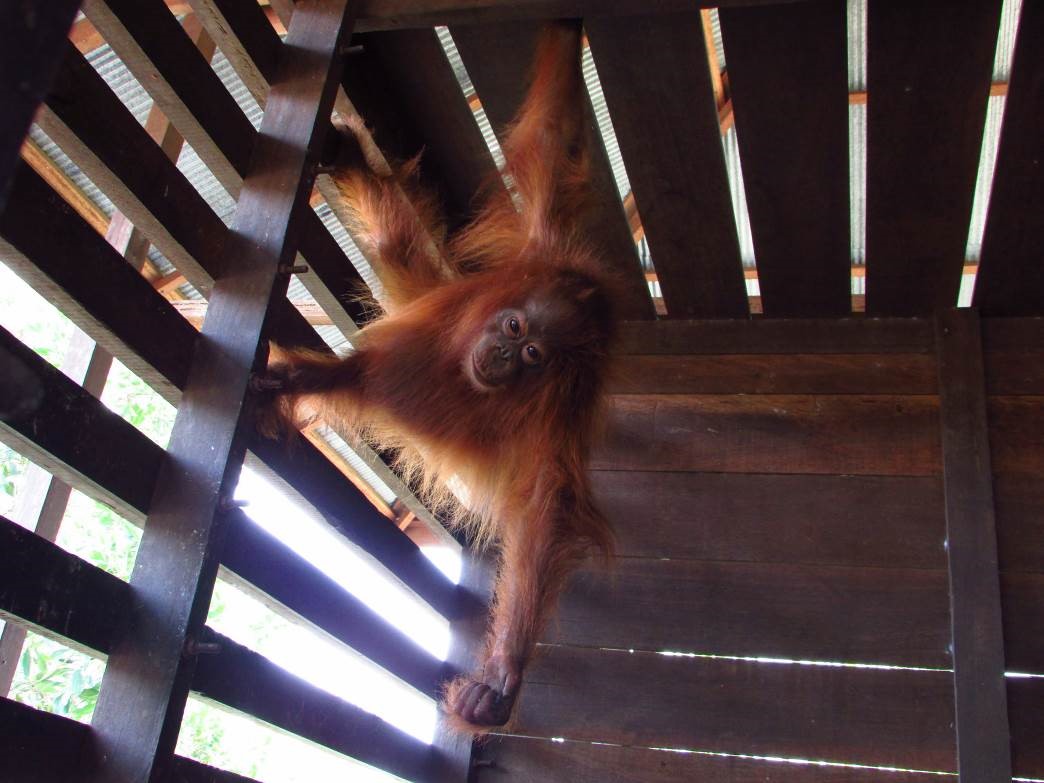
Rawit has now joined our soft-release programme within the Lamandau Wildlife Reserve where staff will continue to monitor and support her progress until she is considered ready for release.
To help us provide Rawit and other orangutans on our soft-release programme with the very best care, please consider adopting an orangutan. All proceeds go directly towards supporting the Foundation’s soft-release programme.
A Race to Freedom
We recently received news from the field of a rescue which did not go as planned, but nevertheless resulted in success. Last week, Orangutan Foundation staff received reports from the local village of Pangkalan Lima of a sun bear trapped in a villager’s well. The smallest of the world’s eight living bear species, the Bornean sun bear is also the least studied, with little known about its biology or range.
Our vet first anaesthetised the bear in order for staff to be able to safely remove the bear without injury to either party. A net was used to lift the bear up from the well.
The Foundation vet took blood samples which were taken to test for diseases which may have left the bear vulnerable following release. Test results later showed the bear to be in good health.
When managing the rescue and translocation of wild animals there is always a degree of unpredictability as to how the animal itself will react. The bear was placed within a cage whilst still sedated ready for translocation into the forest nearby.
But after two hours, staff found the bear had escaped! It took a further two hours to successfully recapture the bear from BKSDA grounds, where it was swiftly moved to a stronger cage until its release.
Later that evening it was further transferred to a safer cage overnight, as staff were still worried he could bite his way through the second cage. The bear was clearly very wild and needed to return to the forest, and staff successfully released it the next day in camp Siswoyo in Lamandau Wildlife Reserve.
Foundation staff are encountering a rise in the number of animals in need of translocation as they come in increasing contact with growing human settlements. Make a donation to ensure the Foundation can continue to keep the surrounding protected areas free from human development so that animals we rescue such as this sun bear have forest to return to.
Herni – another orangutan rescued and released.
We have just received a report from our reintroduction manager, Azhari, about a recently rescued orangutan.
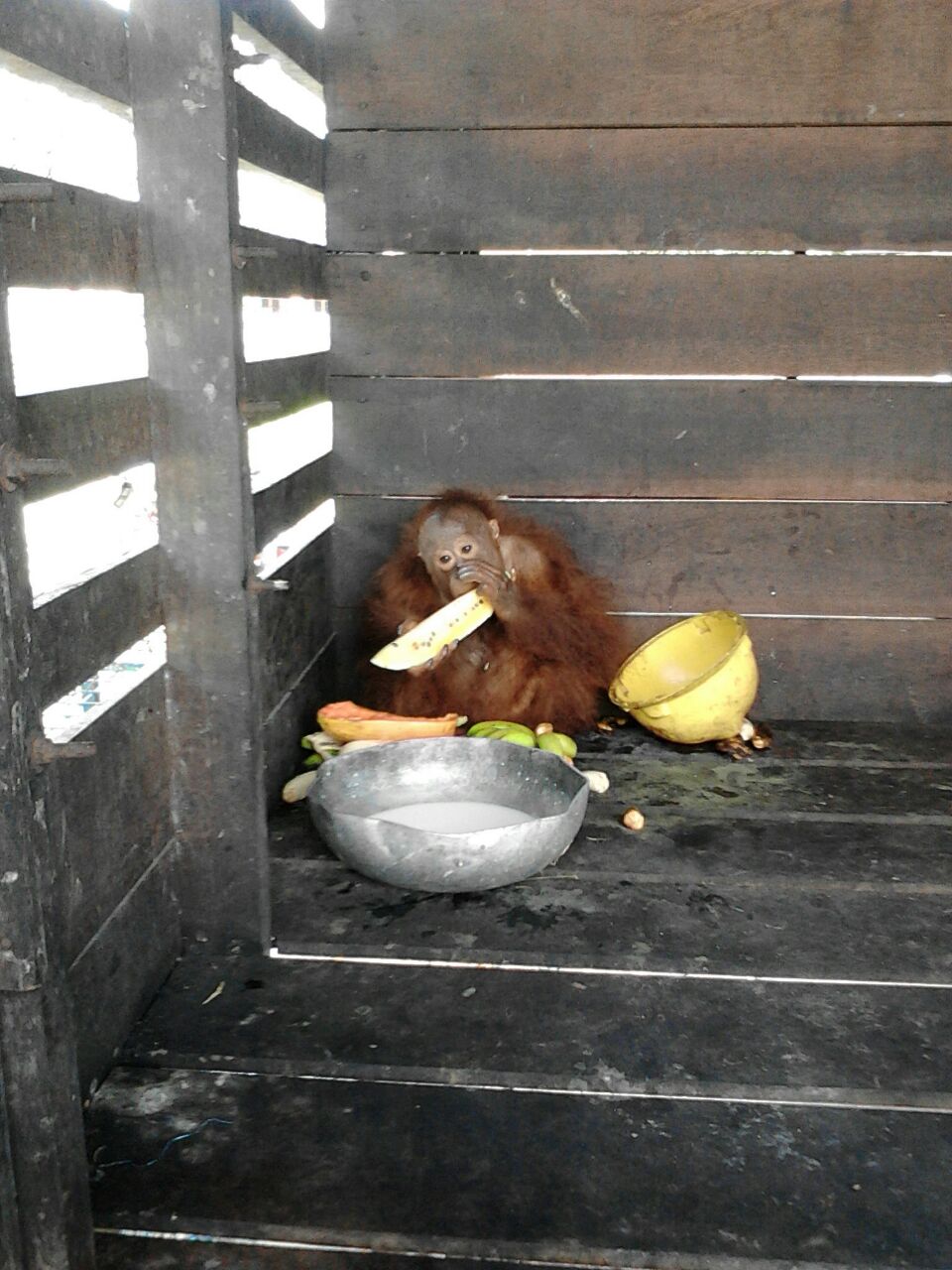
Herni is a young female orangutan with a tremendous wild spirit. She was handed over to the Indonesian authorities by a local community, near Sampit (Indonesian Borneo), at the end of June. Herni was taken to the Lamandau Wildlife Reserve, an area which the Orangutan Foundation actively protect with guard posts and patrols. For three weeks Herni was looked after at Camp Siswoyo, one of six orangutan release camps, in the Reserve.
Camp staff report that she doesn’t make the tidiest nests to sleep in and sometimes she adds branches to old nests to fix them and make them stronger. As you would expect from an orangutan, she travels well through the trees rarely descending to the forest floor. On the 26th August, the Orangutan Foundation staff decided that Herni was ready for soft release. This means being monitored and followed by the camp staff from dawn to dusk for 20 days. Not as easy as it sounds!
Reports so far show that Herni is doing really well, eating the correct foods and following adult females to learn from them what foods to eat. The daily ranging that Herni is doing is between 600m and 1km. The good news is while Herni follows the other orangutans, she rarely goes down to the ground. Sometimes, the staff lost her because she likes to move in the forest canopy, just like an orangutan should, whilst the staff are having to climb over tree roots and wade through swamps. Our staff are experts in the forests and so she doesn't get lost for long.
Please consider making a donation to support our ongoing work protecting this important forest reserve and its precious inhabitants.
Thank you
Orangutan Foundation
Adventures in Borneo
This summer I had the unique opportunity to visit Central Kalimantan to see the area in which the Orangutan Foundation operates. I have been interning with the Foundation for 4 months, and I’m familiar with many of the areas they protect, although by name only. Therefore, it was a pleasure to see these landmarks in the flesh and meet the Indonesian team that work so hard to protect them. The various camps are most easily reached via Kalimantan’s river systems. As I travelled down river by speedboat, the waterfront houses of Pangkalan Bun quickly turned into dense forest. Noteworthy sightswere various indicators of habitat loss, such as logs being transported towards the town. Kingfishers darted in front of the boat so fast that getting a good photo was impossible!
I first visited the site of the new guard post where this year’s volunteers were making excellent headway into its construction. The volunteers were a hardworking, dedicated bunch from all walks of life! They were all dedicated to the cause and felt genuine, collective concern for the threat of habitat loss, highlighted by the constant stream of reminders around them. They spoke of awaking to the sound of chainsaws, highlighting the need for a guard post in the area.
Afterward, I got to visit Camp Buluh. This is the current home of Sugih, a 5-year-old female who was rescued by OF, previously kept as a pet. Foundation staff informed me that she had made good progress, she was behaving as a wild orangutan should - encouraging news.
The next day was the volunteer’s day off, and I was lucky enough to join them to visit Camp JL, where Okto and Ketty are currently being cared for, and Camp Gemini. Okto and Ketty were a lively duo to watch, and really quite amusing, with Okto dropping to the ground at one stage and crossing his arms as if to say “I am not doing any more nest-building practice!”. Hopefully in time he’ll exhibit less of this behaviour, as wild orangutans are rarely seen on the forest floor.
Camp Gemini’s feeding station was a hive of activity; we saw many mothers with infants who inhabited the forest nearby. They began to crowd around with the promise of fresh fruit! We even saw a wild male, enticed by the fruit - and the females!
On my last day, I was taken to visit Pondok Ambung, the Foundation’s research station situated within Tanjung Puting National Park. There were 15 camera traps placed around this area which provided evidence of a plethora of wildlife who call this National Park home.
We then visited the famed Camp Leakey where I saw a gibbon amongst the orangutans visiting the feeding station, which moved too swiftly through the tree tops for a photo! The traffic caused by the tourist’s klotoks was really a sight to behold, displaying how popular this area has become with people from around the world.
The journey back to Kumai was magical, made so by numerous orangutans who had begun to make their nests by the river’s edge.
I had a fantastic time visiting this wonderland that so many orangutans call home. I would urge anybody who has not already done so to check out the various trips available to visit for themselves, particularly the Volunteer Programme (http://www.orangutan.org.uk/orangutan-tours). I’ve definitely received a ginger thumbs up from the orangutans in the area, as well as being made to feel very welcome by the excellent Indonesian staff members. Many thanks and hoping I’ll be back soon!
The Promise of Nature
Dull and grey, those are the two main words used to describe the cities of the world today. My home is a forest, well it is to me, but to everyone else it’s a colossal, unoxygenated, city of grey. Why they cut down trees I don’t know, probably money. Why is money “so” important to people? I really don’t know? It’s stupid that money is so important to the world, it’s not important, you don’t “need” it to live life happily, all you need is friends and family.
Before they cut it down, the forest was happy and lively. My line of family had lived there for generations and by living off the land they all had happy lives, and I did too until the loggers came…they made me and my friends and family leave the forest and everything I knew and loved.
What happened then I can’t and don’t want to remember, but the one thing that I do remember is that before I left the forest, curse those loggers, I filled a duffle bag full of acorns, just in case.
Turns out I did need them.
When I came back to where I came from, it looked exactly the opposite of how I remember. It was dull and grey, and the only animals were depressed, grey pets, rats and flies, the people were the same as the pets, depressed and grey.
I hated it, the city and the people, but worst of all was the grey. I had to do something then I found it, the duffle bag. Of course, I can plant trees, shrubs and flowers all over the city and maybe, just maybe, all over the world!
I started with my street, planting in every crack in the pavement, in gardens and balconies. Bit by bit, the city began to be more colourful and more importantly, the people were starting to talk and laugh together and be happy. At last my home was happy and lively again. I moved on to another city and did the same and another and another and do on until all the cities of the world were the same as the first one, happy and colourful.
The Cost of Being Cute
SLOW LORISES SUFFER BOOMING ILLEGAL PET TRADE - Spring 2015

Much like the orangutan, the slow loris, also native to South East Asia, enjoys a moist peat swamp forest habitat. It is nocturnal and perfectly adapted to life in the trees. Despite the increased loss of critical forest, this is not the greatest threat that slow loris populations face. As well as being used in traditional medicine, slow lorises are being taken from the wild in their thousands every year to be sold as pets.
All five loris species are now recognised as either vulnerable or endangered and are listed as species threatened with extinction on Appendix 1 of CITES (Convention on International Trade in Endangered Species). Though the trade of slow lorises has been banned both in South East Asia and internationally, the trade system is increasingly active, widespread and being carried out fairly openly, indicating a lack of effective law enforcement. For example, in Japan, slow lorises are advertised publicly for sale, with individual animals fetching between £1000 and £3000.
A recent spate of YouTube videos, presenting slow lorises as cute, cuddly pets, is partly to blame for the demand. There is no denying that the loris’s large bulging eyes, soft furry coat and tiny button nose are pleasing to the eye. But the millions of viewers on YouTube are oblivious to the trauma and suffering of lorises involved in the illegal pet trade.
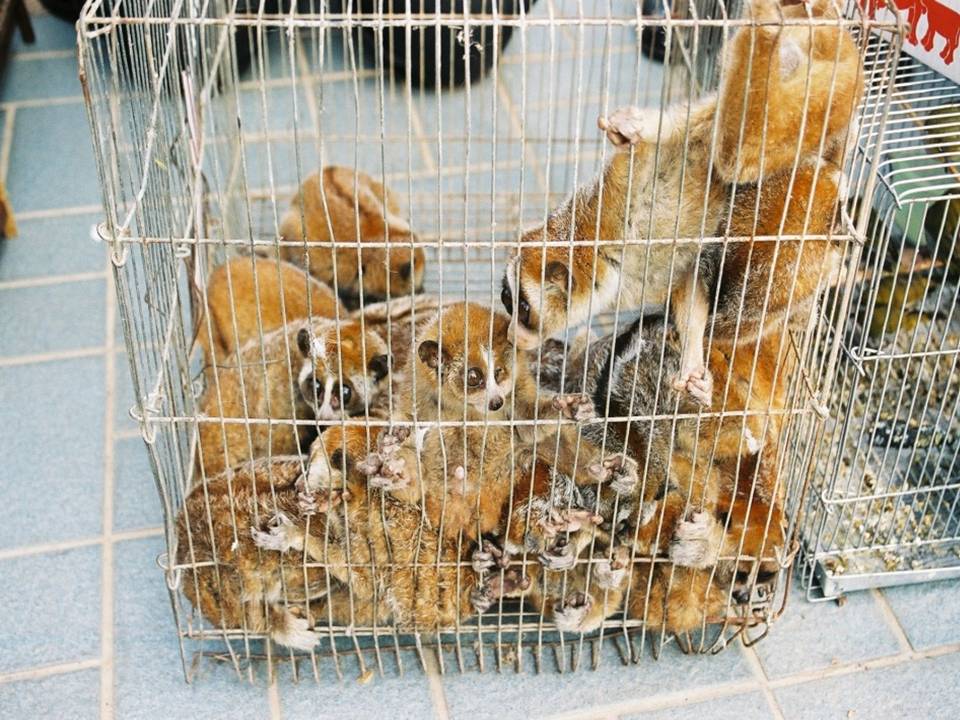
Forced to live diurnally, in wire cages that rip at their hands and feet, it comes as little surprise that a large proportion of captured lorises don’t make it to market. Furthermore, according to Anna Nekaris, a loris specialist based at Oxford Brookes University, lorises’ teeth are extracted so that vendors can claim they are infants – the preferred pets.
Interestingly, the slow loris is the only primate in the world that is poisonous, producing a toxin that can be fatal to humans by combining saliva from the mouth with oil from a gland on the upper arm. This defence mechanism is transmitted through a bite, further encouraging the cruel methods by which a loris’s teeth are removed in order to make them desirable pets.
When loris infants are captured and separated from their parents, they are unable to clean themselves – their fur is constantly covered in urine, faeces and oily skin secretions – and between 30 per cent and 90 per cent die in transit.
Towards the end of last year, the Foundation was able to release a single slow loris into a protected forest. It is hoped that new loris populations will eventually be able to grow safely within these protected boundaries.


